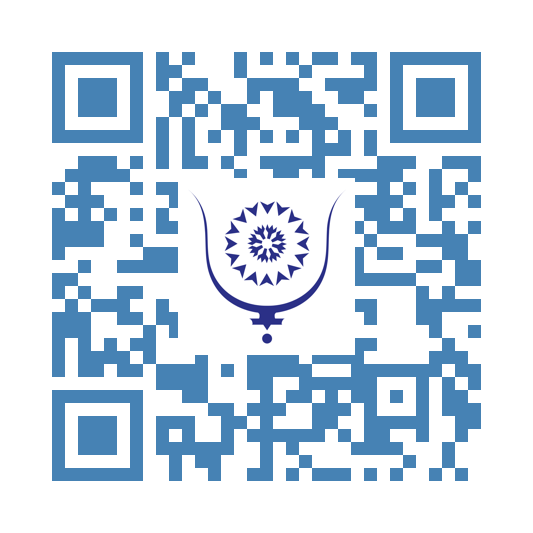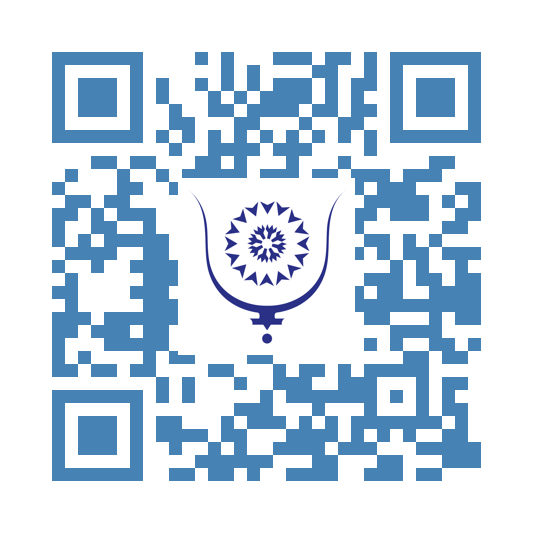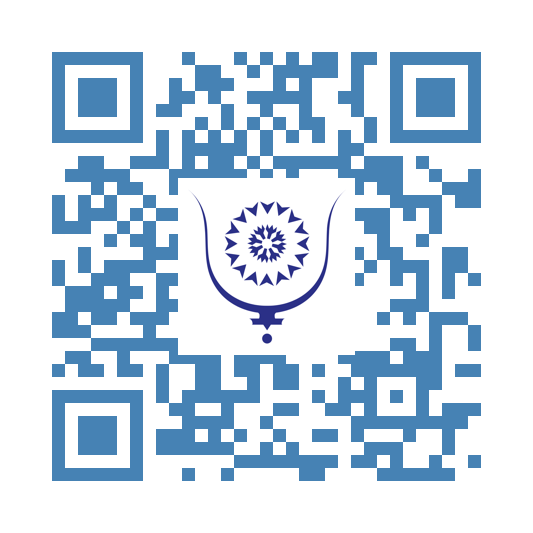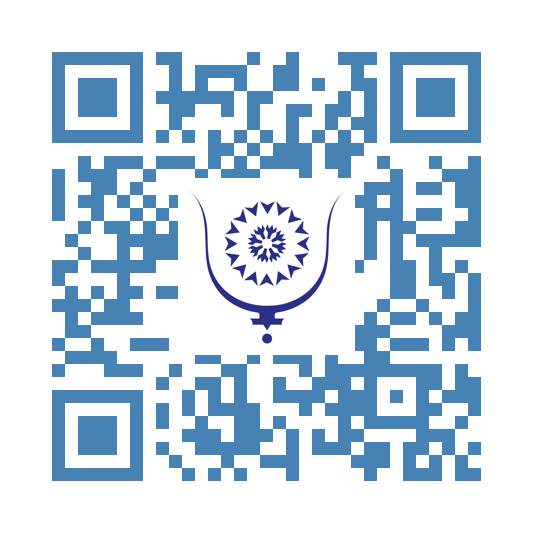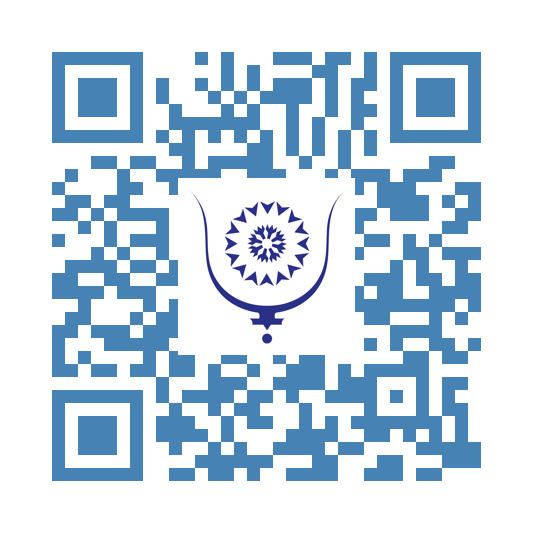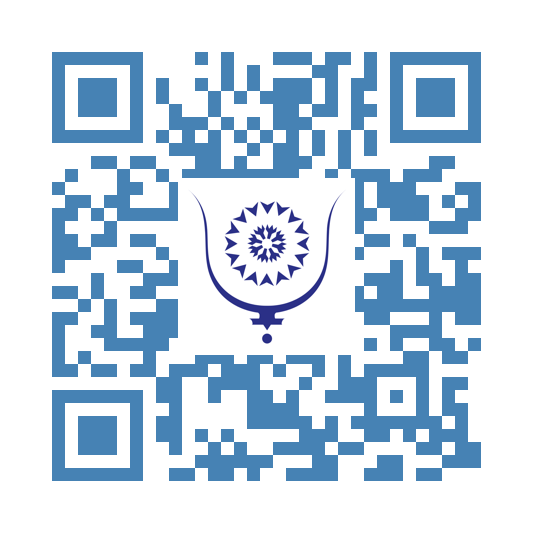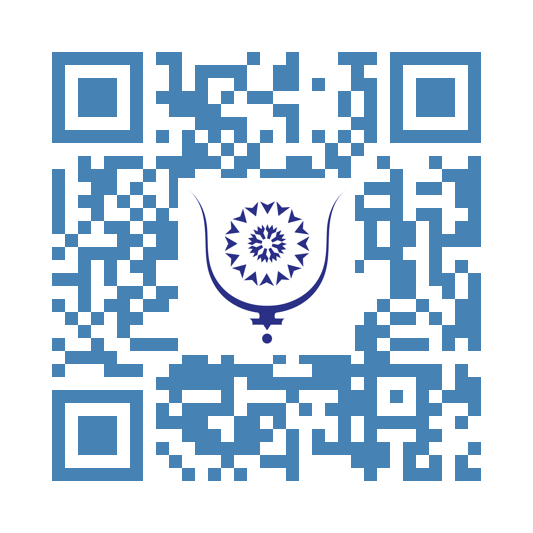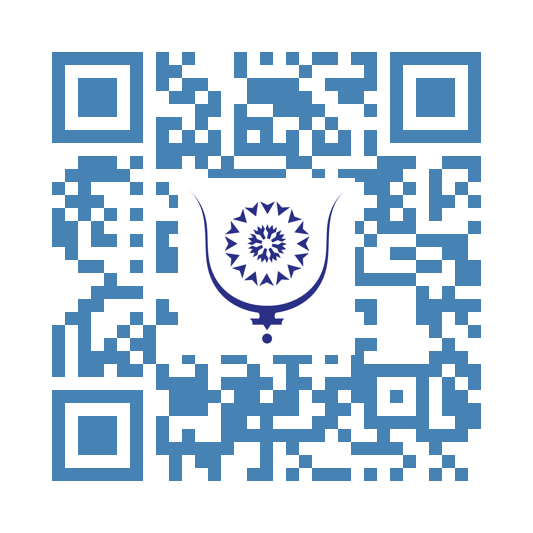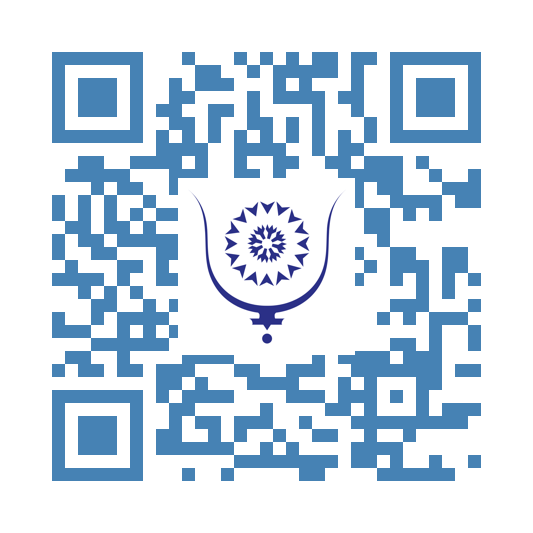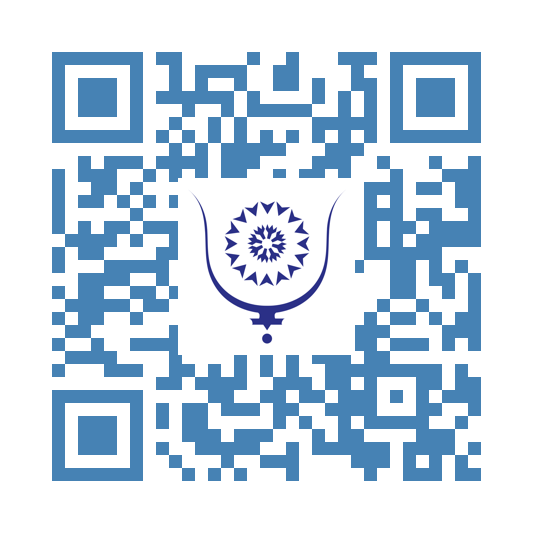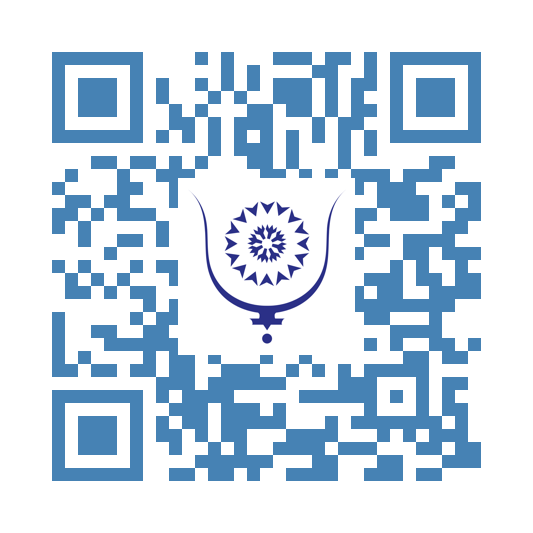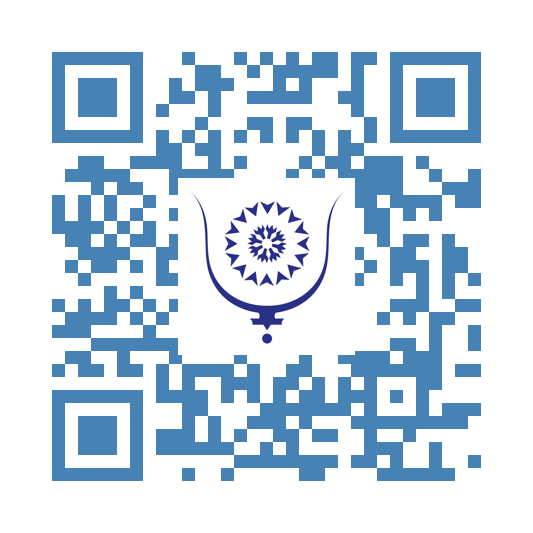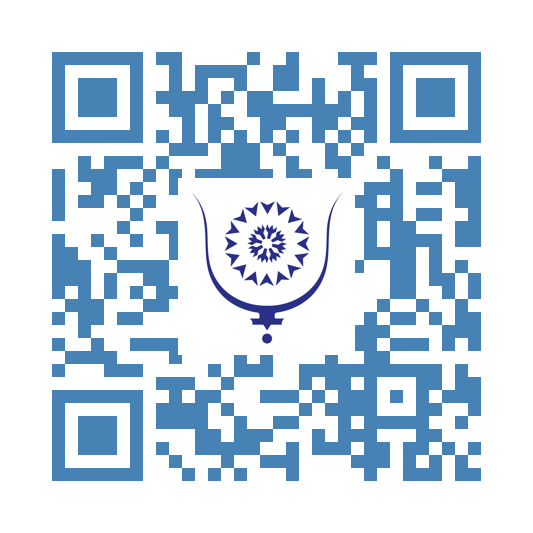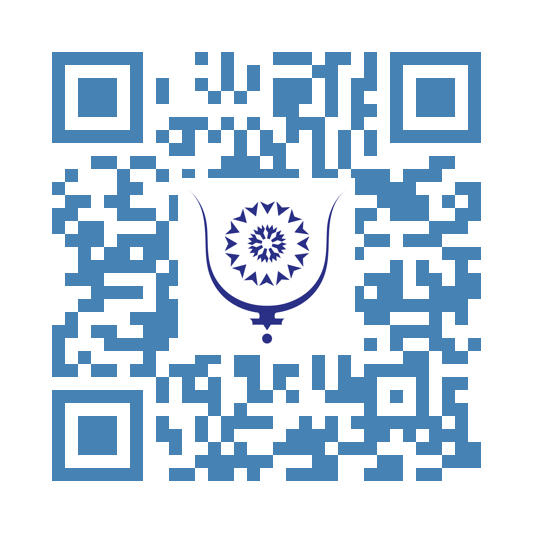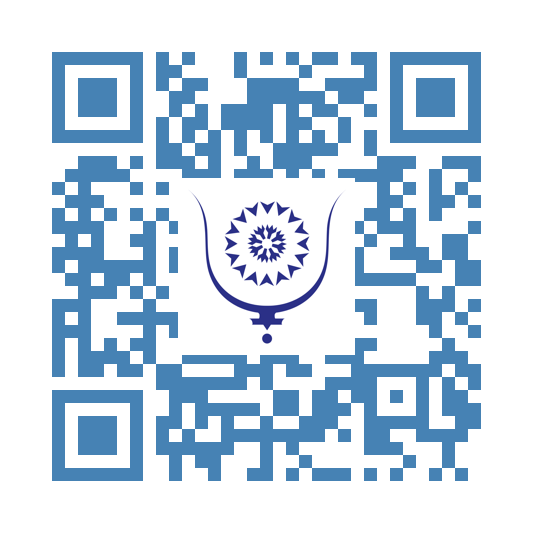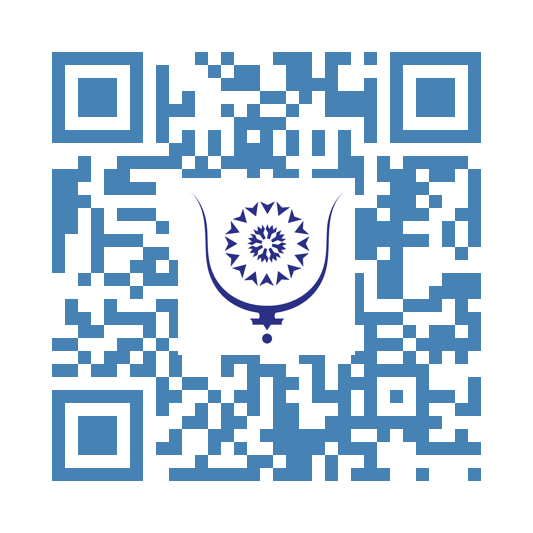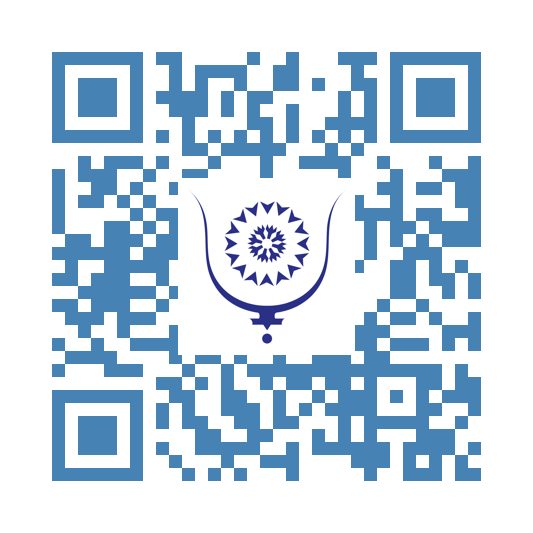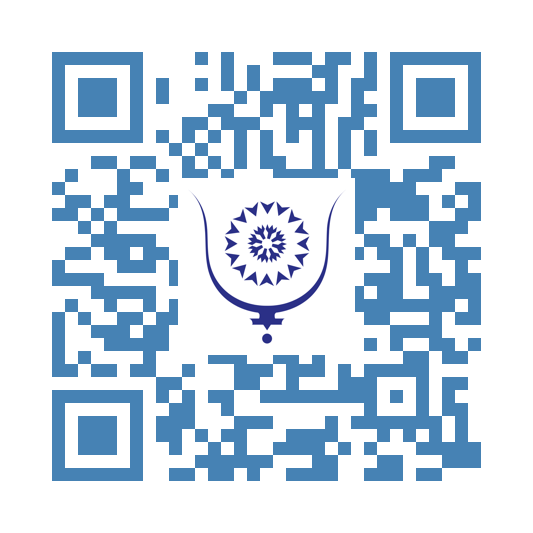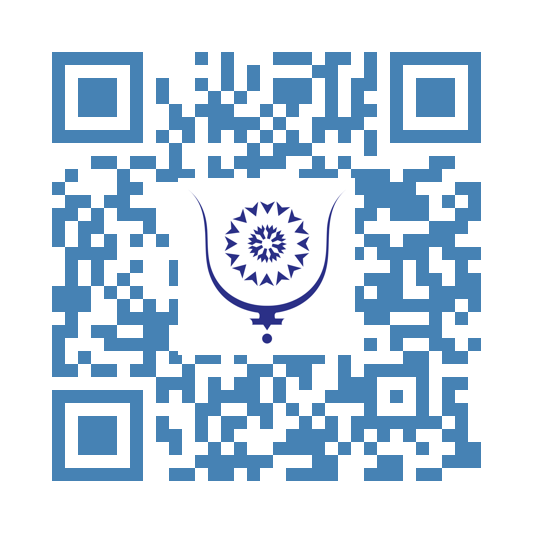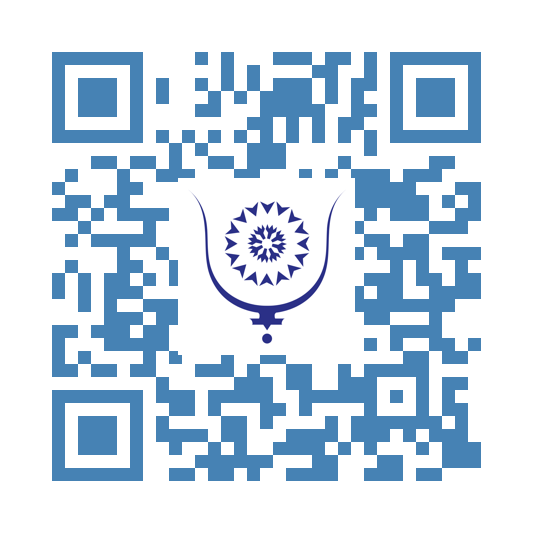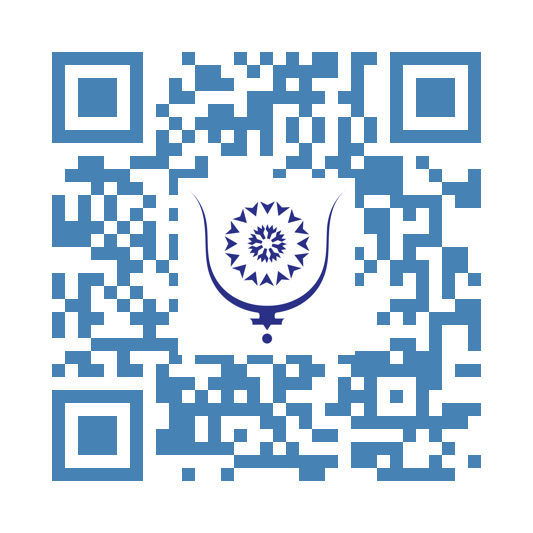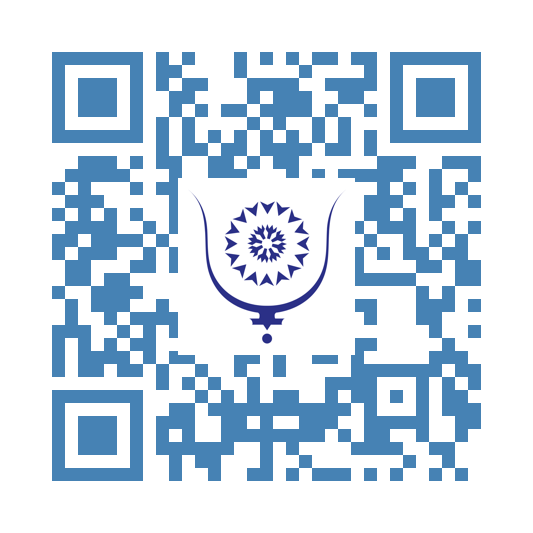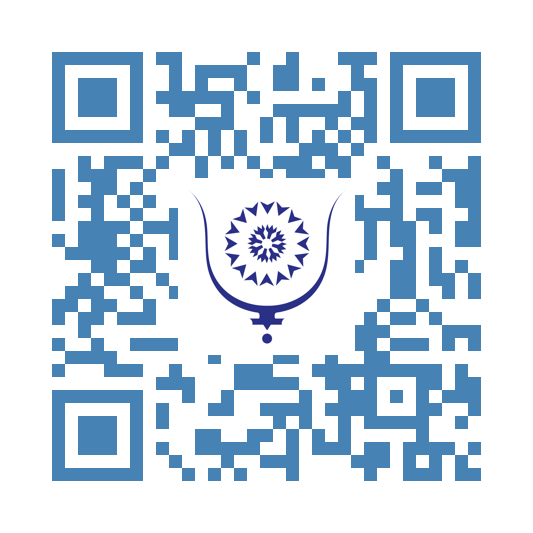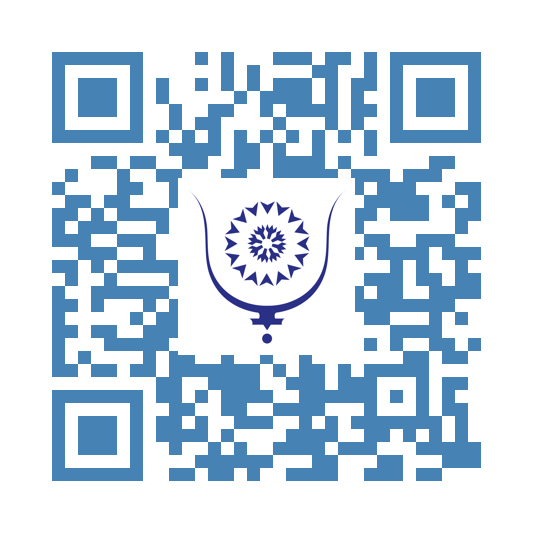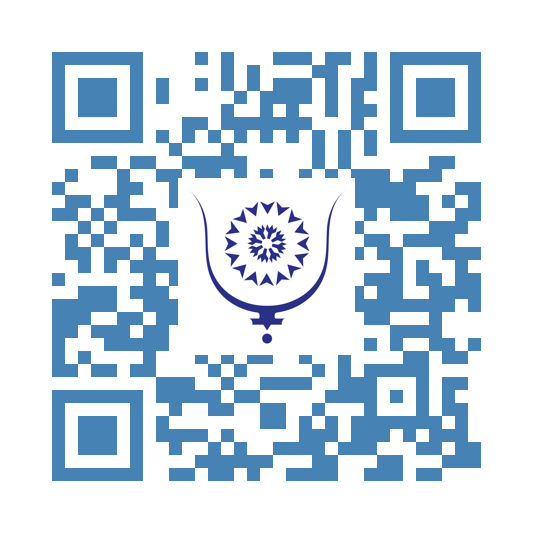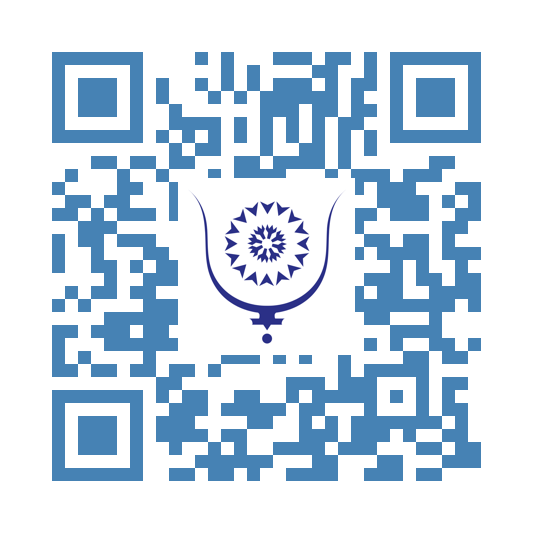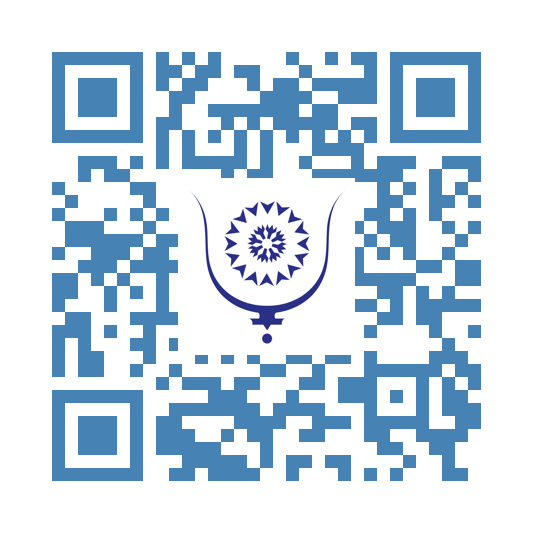N’Djamena-Kousséri Half Marathon: A Message for the UN and Everyone Working for Peace in the World
207
Next September, more precisely on the 6th, an exceptional half marathon race will bring together the people of Kousséri, Cameroon, and N'Djamena, the capital of Chad. The athletes will start in front of the N’Djamena city hall and head towards Kousséri’s town hall, crossing the border between the two countries without any customs checkpoint or stop. On the contrary, authorities from both countries are collaborating to ensure that runners are supervised and secured on both sides under the best possible conditions. This will already be the third edition of this unprecedented race.
This sporting event, largely sponsored by the African Athletics Confederation, goes beyond simple competition: it embodies a powerful symbol of rapprochement and reunification of the peoples of Central Africa, highlighting the deep human dimension of such an initiative. Indeed, the populations on both sides of the border share so much in common that this administrative boundary, a colonial legacy, cannot separate them.
The strength of sport as a vector of unity is a slogan and a value we repeat on every occasion. But how many sporting events can truly embody it on the same scale as this unique race in the world?
Sport, by its universal nature, has the rare power to transcend cultural, political, and social barriers. But here, this is the only sporting event where it transcends borders.
In the border region between Cameroon and Chad, it is actually one and the same people who live here. Circumstances have made them two populations belonging to two different countries. On both sides of the border, people share history, traditions, and common challenges. In this context, which is not unique to this central African region, this half marathon represents far more than a simple endurance challenge. It is a bridge between communities often separated by artificial borders inherited from the colonial past.
Running together, across spaces that connect these two neighboring cities, symbolizes the will to overcome historical divisions. Every step is an invitation to solidarity, mutual understanding, and the celebration of shared values such as respect, brotherhood, and peace.
Kousséri and N'Djamena, though geographically close, have often been distanced by political tensions or administrative differences. But on the ground, in the heart of this race, the differences fade away. Runners, whether amateurs or professionals, from here or abroad since the race is international, share the same goal: moving forward together.
This sporting initiative also allows the meeting of communities, families, youth, local leaders, and institutional actors from both countries. It encourages cultural, economic, and social exchanges, paving the way for more sustainable partnerships and regional stability.
Here is a genuine message of hope for peace and reconciliation that the UN should hold up as an example, especially in the face of those who waste fortunes on endless conflicts. Examples are abundant...
The Kousséri-N'Djamena half marathon sends a clear and inspiring message: despite borders and differences, it is possible to build human bridges, consolidate lasting peace based on mutual understanding and cooperation.
In a world where ethnic and political conflicts often divide peoples, these moments of sporting gathering illustrate the power of dialogue and reconciliation. They express deep humanism, where each step taken on the ground is a step toward fraternization, toward rapprochement, toward a shared future.
Beyond athletic performance, the half marathon between Kousséri and N'Djamena on September 6th is a true celebration of human unity. By bringing together peoples with close origins yet sometimes divided, it invites reflection on our ability to overcome the borders that separate us to prioritize what should unite us: brotherhood, peace, and hope for a better world.
**The Human Dimension of Rapprochement and Reunification of Peoples finds a true embodiment in the N’Djamena-Kousséri Half Marathon, Bridge of Hope.**
For those who understand, greetings.
Share:
N’Djamena-Kousséri Half Marathon: A Message for the UN and Everyone Working for Peace in the World
copy:
https://bluwr.com/p/343913187
Ley Lines: The Invisible Currents of Earth’s Sacred Geometry
362
The concept of ley lines suggest the existence of invisible pathways of energy that crisscross the Earth, forming a network of subtle energy, ancient alignment, and spiritual resonance. Though the term “ley line” was first coined in 1921 by the English antiquarian Alfred Watkins (1855-1935)—who noticed that many ancient sites in the British landscape aligned along straight tracks—the concept is even older, echoing geomantic traditions across cultures that recognized the Earth as a living, breathing being with its own circulatory system of sacred force.
Basically, ley lines are believed to be channels of Earth's energy—similar to meridians in Traditional Chinese Medicine (TCM)—which connect sites of spiritual, astronomical, and historical significance. These may include standing stones, megalithic temples, pyramids, cathedrals, burial mounds, and crossroads. In the East, these currents are known as dragon lines or "lung mei" in Chinese geomancy (feng shui), while in South America, the Inca referred to similar energetic pathways as "ceques", radiating outward from the Coricancha Temple in Cusco.
From an esoteric standpoint, ley lines are neither arbitrary nor merely symbolic. They are understood to follow the electromagnetic shape of the planet—interacting with telluric currents, magnetic anomalies, and planetary grid systems. At certain points where multiple ley lines intersect, energy becomes concentrated, forming what are known as power nodes or vortex points. These nodes are believed to amplify consciousness, enhance ritual, facilitate spiritual contact, and sometimes thin the veil between the seen and unseen worlds. Places such as Stonehenge, the Giza Plateau, Machu Picchu, Glastonbury Tor, and Mount Shasta are frequently cited as residing on these potent intersections.
Mystically, ley lines represent more than geological curiosity—they are conduits of planetary consciousness, arteries of Gaia herself. In Hermetic and occult traditions, the Earth is viewed as a macrocosmic body, complete with chakras, nadis, and energetic organs. Just as the human body channels prana through subtle pathways, so too does the Earth transmit vital energy through her leys. To walk these lines consciously, or to work magically upon them, is to participate in the planet’s own alchemical process—aligning human intention with terrestrial intelligence.
In this context, the concept of ley lines resonates with the Gaia Theory, proposed by James Lovelock (1919–2022) and Lynn Margulis (1938–2011). This theory pictures Earth as a self-regulating, living system in which the biosphere, atmosphere, geosphere, and hydrosphere are deeply interconnected. Just as Gaia Theory suggests that the planet maintains balance through feedback loops, ley lines can be seen as subtle energetic channels through which this regulation occurs. From an esoteric perspective, these currents mirror Gaia’s own physiological processes—arteries circulating life-force and sustaining the interdependence of all beings within the planetary organism.
Many practitioners of geomancy, dowsing, and ritual magick believe that ley lines can be activated or aligned through offerings, ceremonies, sound, and sacred architecture. Temples and churches built upon these lines often reflect celestial alignments, forming a harmony between heaven and earth. Some traditions hold that ancient initiates placed monuments at ley crossings not merely as markers, but as resonant structures designed to stabilize or modulate the flow of planetary energy.
There is also a mythical and cosmological layer to ley line theory. In Arthurian legends, Glastonbury is not only a place on a map but a threshold to Avalon—an invisible world accessible through altered states or alignment with the land’s living current. In this way, ley lines serve as the nervous system of a planetary intelligence, a kind of spiritual cartography through which initiates navigate both terrestrial and cosmic realities.
Though scientific consensus does not validate ley lines as measurable phenomena, their enduring presence in sacred geography, myth, and ritual suggests they function on a level beyond conventional empiricism. They invite the sensitive and the intuitive to perceive the Earth not as inert matter, but as a divine organism—alive, aware, and in communion with those who learn to walk her lines in reverence.
Share:
Ley Lines: The Invisible Currents of Earth’s Sacred Geometry
copy:
https://bluwr.com/p/341332064
The Seven Chakras: A Metaphysical Anatomy of the Soul
1714
Throughout the ages, esoteric traditions, yogic sciences, and mystical philosophies have described the human being as more than flesh and bone—as an energetic organism with subtle centers of power, perception, and spiritual potential. Among these systems, the doctrine of the seven chakras stands as one of the most refined and symbolically rich models of inner transformation. These chakras—meaning “wheels” in Sanskrit—are vortexes of energy located along the body axis, each responsible for specific aspects of consciousness, physiology, and spiritual evolution. From the densest energies of survival to the most ethereal states of divine union, the chakras form a ladder of ascent, guiding the soul towards enlightenment.
The Root Chakra (Muladhara), located at the base of the spine, is the foundation of the entire energetic system. It governs physical survival, grounding, and the instinct for self-preservation. Associated with the element earth, it links the individual to the material world and the ancestral lineage. When balanced, it grants stability, trust, and a strong connection to one's body and environment. When blocked or deficient, it manifests as fear, insecurity, or disconnection from the physical plane. Spiritually, Muladhara represents the coiled energy of potential—the kundalini—awaiting its ascent through the higher centers.
The Sacral Chakra (Svadhisthana), situated just below the navel, is linked to creativity, sexuality, and emotional fluidity. Associated with the element water, it reflects the soul's capacity to feel, to relate, and to generate life—physically, artistically, or spiritually. It is the seat of desire, pleasure, and procreation, and its energy is relational, connecting the self to others through intimacy and shared experience. When in harmony, it allows the free expression of emotion and creative force. When imbalanced, it may result in emotional instability, guilt, or addictive tendencies. Svadhisthana is where passion and refinement meet.
The Solar Plexus Chakra (Manipura) is the center of personal power, will, and self-definition. Aligned with the element fire, it is related to transformation, ambition, and the assertion of the individual will. It is through Manipura that one develops a clear sense of identity and the strength to act upon purpose. When balanced, this chakra radiates confidence, motivation, and integrity. An excess may produce domination or pride, while deficiency results in passivity or low self-worth. Spiritually, Manipura is the alchemical forge where ego begins to be disciplined and transmuted into conscious intention.
The Heart Chakra (Anahata) is the gateway between the lower and upper chakras, and the center of unconditional love, compassion, and spiritual empathy. Associated with the element air, it expands the sense of self to include others, fostering connection, forgiveness, and inner peace. An open Anahata transcends personal desire and embraces unity, allowing one to love without attachment and to serve without self-interest. Imbalances may manifest as emotional coldness, grief, or over-dependence. Spiritually, this chakra is the sacred rose of divine love, unfolding toward the eternal.
The Throat Chakra (Vishuddha) governs expression, communication, and the power of the word. Linked to the element ether (or sound), it represents the capacity to speak truth and to manifest thought into form through language. It is also the seat of inner listening and alignment between inner truth and outer expression. When open and balanced, Vishuddha enables authentic speech and artistic expression. When blocked, it may result in silence, dishonesty, or miscommunication. At the spiritual level, it is through this center that the magician, mystic, or initiate learns to wield the sacred word—the logos—as an instrument of transformation.
The Third Eye Chakra (Ajna), positioned between the eyebrows, is the seat of inner vision, intuition, and higher perception. It transcends rational analysis and opens the gates to symbolic insight, dreams, and clairvoyant awareness. Associated with the light element or pure mind, it integrates the polarities of logic and imagination, allowing one to perceive patterns, archetypes, and spiritual truths. A balanced Ajna chakra produces clarity, insight, and an awakened inner compass. Imbalance may cause delusion, fantasy, or disconnection from reality. Mystically, Ajna is the eye of the soul, through which one perceives the invisible architecture of the cosmos.
The Crown Chakra (Sahasrara), located at the top of the head, is the highest center of consciousness, representing union with the Divine, cosmic intelligence, and spiritual liberation. Unlike the other chakras, Sahasrara is not governed by an element but by pure consciousness—chit—itself. It is symbolized by a thousand-petaled lotus, forever unfolding into infinity. When this chakra is fully awakened, the individual transcends ego and merges with universal will, experiencing profound bliss, silence, and liberation. Imbalances may manifest as spiritual disconnection, nihilism, or excessive intellectualism. At its highest vibration, Sahasrara is not a center of power but a doorway to the return to the Source.
Together, the seven chakras form a living mandala of human potential. They are not merely energetic centers but evolutionary thresholds, each inviting the soul to purify, awaken, and integrate aspects of the self on its path toward unity with the divine. When harmonized, these chakras become a ladder of light—a sacred ascent from survival to transcendence, from matter to spirit. The awakening of the chakras is thus not an end in itself, but a means of returning to wholeness, where the human becomes a conscious expression of the infinite.
Share:
The Seven Chakras: A Metaphysical Anatomy of the Soul
copy:
https://bluwr.com/p/323058346
Genesis...
4258
I greatly enjoy looking out windows, any windows. Windows have always offered me a picture of life. A picture that constantly changes, a picture that I alone see before it disappears forever. Maybe that is where my taste for the ephemeral comes from. It is my only certainty.
What I am also sure of is that it comes from the fact that as a baby and young child, my mother would place me by the window where I would hold onto a grille. An opportunity to be both inside and outside at the same time and to let her go about her many responsibilities as a housewife. It was a traditional Moroccan grille, typical of ours. Today, I have reused that same grille design on the windows and balconies of my house.
I have in fact remained my mother’s eternal child, no doubt like we all remain so, but probably differently, otherwise, uniquely.
The window is an escape from the cramped space of the house. In fact, all houses are cramped. The house, paradoxically despite its smallness, is a space of freedom, intimacy, and security. It is also a space that distances the horizon and makes it sublime. The window allowed me to raise my head and look far. As far as this window allowed me to see.
The house cultivates the dream; the window waters it.
On the evening my mother passed away, I stood by the window. It seemed to me I heard her voice again speaking from afar to reassure me. My mother loved me very much. She did not say it, but made me feel it through the tone of her voice, her gaze, and a slight smile at the corner of her lips. A smile she had a special secret to. My mother’s smile was genetic. I clearly saw she inherited it from my grandmother—Cherifa Lalla Zhour had the same smile.
My mother was not expansive.
She extended her love to my children later, and I felt it. I was her eldest, her first female experience, her first pains, her first childbirth, the first baby cry to her ears.
I owe my mother much: the sensation of a pencil in hand, the touch of the softness of paper before writing on it, the taste for reading and the pleasure of manual work.
My mother was among the first classes of the modern school in Fès. My maternal grandfather, Si Ahmed Ben Ali, had the wisdom to send her to school against the opinion of people at the time—family, neighbors, and onlookers. She traveled a long distance from Saqaet El Abbassyine to her school. It was in Fès j’did, a neighborhood of great nationalists, intellectuals, artists, and state clerks: Bahnini, Benbouchta, Moulay Ahmed El Alaoui, Ahmed Chajai, and many others. It is the stronghold of Wydad of Fès.
I have many wonderful memories of Saqaet El Abbassyine. From time to time, I go for a walk there to recharge myself. The dilapidation of Bab Riafa, the sad passage by Lalla Ghriba to reach Saqaet El Abbassyine, the continuation by Sidi Hmama to arrive at Qobt Assouk, saddens me every time. So, to soothe my pain and sorrow, I go and sit at Bab Boujloud to enjoy a good glass of tea prepared in a traditional samovar, under the famous mulberry tree.
The magic of Fès is unmatched.
My father, on the other hand, was affection in the absolute. The exemplary man. The man who forged my pride and committed my life to serving the country. Moroccan at heart, attached to the land of his ancestors. Proud to have been an active nationalist against the protectorate. He spoke of his people’s struggle against French soldiers. He kept fresh memories of the fights of Bou Gafer and the brave battle of his people. He was happy to have served his country but also disappointed with the evolution of some things. He said that we were losing our soul with the decline of our attachment to ancestral values; remembered by all the families of old Rabat who still recall him for having treated their children and eased their pains. He passed away certain that Morocco could have done better.
He remained attached to his parents and adored them, attached to his native land that he visited every year, attached to his people to whom he offered land to expand the Sidi Daoud cemetery, his forever village, today swallowed by a soulless Ouarzazate. I am not surprised. My father is a direct descendant of Sidi Daoud, a Sufi Sheikh and great scholar who left many works including the famous *Oumahat Al Wataeq, Al Mountafaa Bih Fi Anawazil*.
My father loved Rabat and its beach. It was there he saw the sea for the first time in his life, coming from the other side of the Great Atlas, which climate change is now altering.
It was at the Rabat beach that he learned to swim.
Today, his grave overlooks that beautiful beach and ocean. His resting place is bathed in the sea air that blows continuously over the hilltop, the final abode of thousands of souls at rest, of lives both rich and less rich, and of memories forever lost. The cemetery tells a lot about the place we give to our dead, and it does not speak well of us.
So, like my brothers and sisters—Jalil, Moughni, Rajae, Atika, Abdelmoutaleb, Elhoussein, Soumaya, I am a kind of accident of nature. A father from Ouarzazate marrying a girl from Fès; that was rare. It was 1950.
The maternity hospital where my lungs filled for the first time with air and where I cried out announcing my coming to life is still there. It was Tuesday, 11:37 am, May 15, 1951. Each time I pass by, something brings me back to memories I have created from my mother's stories. I see again her pride and my father's joy at my birth.
By chance, on the way to bury my mother, and years later my father, we passed along the Almohad wall. The historic maternity hospital of Rabat is just behind. The circle was thus completed.
My mother's name was Lalla Amina Makhloufi and my father’s Ahmed Belhoucine El Ouarzazi. The civil registry attendant gave him the surname Daouda, probably because he was born in Sidi Daoud or simply because that person had been influenced by a stay in sub-Saharan Africa...
Share:
Genesis...
copy:
https://bluwr.com/p/318522084
The Sevenfold Constitution of the Human Being
7964
Several esoteric traditions believe that the human being is not limited to a single body of flesh and blood, but instead exists as a amalgam of seven interpenetrating bodies, each vibrating at a distinct frequency and corresponding to a unique level of consciousness. This constitution in layers forms a bridge between the material and the divine, mapping the soul’s descent into matter and its potential ascent back to the source.
The physical body is the most tangible and material of the seven. It serves as the vessel through which the soul experiences the physical world, bound by the laws of biology, space, and time. It is composed of flesh, bone, and matter, but it does not exist in isolation. Its vitality is sustained by subtle forces, and without these, it would be inert. The physical body is the site of sensation and action, allowing the soul to manifest its will within the temporal realm.
The etheric body, also known as the vital or pranic body, underlies and interpenetrates the physical form. It is made of subtle life-energy and functions as the blueprint or energetic matrix that maintains the structure and function of the material body. It is through this body that prana, chi, or life-force flows, animating tissues, regulating health, and forming the auric field sometimes noticed by those with psychic sensitivity. It connects the material to the immaterial, serving as a bridge between body and soul.
The astral body governs emotion, desire, and imagination. It is the seat of passions, instincts, and inner images, and it serves as the vehicle for dreams and psychic experiences. This is the body that travels in the dream state or in altered states of consciousness and is central to experiences of astral projection. It has a more fluid consistence than that of the etheric, and it responds instantly to emotional impulses, making it the most volatile and reactive of the subtle bodies.
The mental body is the domain of thought, cognition, and reason. It is often divided into two components: the lower mental body, which takes part in concrete thinking, memory, and logic, and the higher mental body, which perceives abstract truths, archetypes, and universal principles. Through the mental body, we develop self-awareness, belief systems, and discernment. It is through the improvement of this body that the ego begins to dissolve, allowing thought to serve truth rather than self-interest.
The causal body, or buddhic body, contains the soul’s higher wisdom and accumulated experience. It is the vessel of intuition, compassion, and non-dual perception. This body exists beyond linear time and holds the karmic imprint of previous incarnations—the lessons learned and the spiritual tendencies cultivated. It is the realm of inner guidance and soul purpose, allowing the being to act from harmony rather than reaction, and to notice unity where the lower mind sees separation.
The spiritual body, or atmic body, represents the divine will and the soul's alignment with cosmic purpose. It is the seat of spiritual volition—not personal desire, but the execution of the higher law. This is the level of mastery where individual will is surrendered to divine intention, and where the soul becomes a conscious co-creator with the universal intelligence. Those who access this body operate from a plane of deep inner sovereignty and radiant stillness, often manifesting profound spiritual authority.
At the highest level lies the monadic body—the pure spark of divinity, the eternal self, the undivided essence from which all the other bodies emanate. The Monad is beyond all form and function, untouched by time, death, or individuality. It is the source of all consciousness within the being and the point of union with the Absolute. Realization of the Monad is the apex of spiritual evolution, where the soul transcends all identities and merges into the infinite. It is the return to the One, the reintegration of the many into the indivisible light of origin.
In most human beings, these bodies remain partially dormant or fragmented. The great work of spiritual initiation is to harmonize and awaken each body, gradually purifying the lower vehicles and aligning the consciousness to subtler vibrations. Practices such as ritual, meditation, prayer, alchemy, asceticism, and sacred study serve to align these bodies and bring them under the guidance of the Monad.
As one ascends the inner planes, perception shifts from the senses to symbols, then to pure archetypes, and finally to the formless light of the divine. The path is not linear but spiral—each cycle of refinement bringing the soul closer to its origin and its infinite potential.
Share:
The Sevenfold Constitution of the Human Being
copy:
https://bluwr.com/p/304907584
Understanding.
8601
The food had just arrived, a bucket of figs, submerged in cool water to shield them from the heat, when the boy entered the narrow street. Confused and burning with anger, he broke the peace that had settled over the biggest ape.
“Come here,” said the biggest ape, voice low and firm.
He reached into the water and extended the boy a fig.
“Take this.”
“I don't understand...” the boy muttered, lowering himself onto the carpet. Grief and rage glowing through his eyes.
“You can have more,” answered the biggest ape.
A long pause followed. The ape measured every words carefully as the boy's tears drew sharp lines across his face.
“Listen,” he said at last.
“To understand life, you must see death.
To understand light, you must see darkness. To understand justice, you must see injustice.”
The biggest ape then ran a single finger across the still surface of the water, the motion briefly parting it into two.
They ate in silence.
In the distance, a ship was leaving the harbor, its sails taut with wind, its trail splitting the ocean.
*Such is the nature of understanding: fleeting borders in the mind of God.*
Share:
Understanding.
copy:
https://bluwr.com/p/297531386
The Golden Dawn
8735
It is impossible to discuss about magick without mentioning The Hermetic Order of the Golden Dawn. It was founded in the late 19th century and stands as one of the most influential occult societies in modern history. Emerging during a period of intense fascination with mysticism, spiritualism, and ancient wisdom, the Golden Dawn synthesized a wide range of esoteric traditions—Hermeticism, Kabbalah, alchemy, astrology, Tarot, Rosicrucianism, and Enochian magic—into a structured, initiatory system. Its teachings and rituals laid the foundation for much of today’s ceremonial magic, influencing major occult figures such as Aleister Crowley (1875-1947), Dion Fortune (1890-1946), Israel Regardie (1907-1985), and even elements of Wicca and New Age spirituality.
The Order was formally established in 1888 in London by three Freemasons—William Wynn Westcott (1848-1925), Samuel Liddell MacGregor Mathers (1854-1918), and William Robert Woodman (1828-1891)—who claimed to have received authorization to form the group from mysterious German Adepts through the discovery of a cipher manuscript. This document allegedly contained the outlines of a magical order structure and provided the inspiration for the Outer Order of the Golden Dawn, which focused on ceremonial ritual, magical symbolism, and spiritual transformation through the Tree of Life in the Jewish Kabbalistic tradition.
The Golden Dawn was hierarchical and initiatory, with members progressing through a series of grades based on the Qabalistic Tree of Life, each corresponding to deeper levels of metaphysical understanding. The Outer Order (or First Order) focused on theoretical knowledge—Hermetic philosophy, astrological correspondences, geomancy, and the use of symbols, especially those from Egyptian and classical sources. Students were trained in ritual magic, visualization, and the manipulation of elemental and planetary energies.
The Second Order, known as the Rosae Rubeae et Aureae Crucis (RR et AC), was an inner circle reserved for initiates who had demonstrated proficiency and inner development. Here, the emphasis shifted from theory to practical and ceremonial magic, including advanced work in scrying, spirit evocation, Enochian magic, and astral projection. Members of the Second Order were tasked with performing complex rites, often involving magical tools such as wands, swords, pentacles, robes, and the use of consecrated temples.
One of the Order’s most innovative features was its integration of diverse traditions into a coherent symbolic and ritual framework. For example, the Enochian system—derived from the angelic communications of John Dee and Edward Kelley in the 16th century—was systematized and used in conjunction with Kabbalistic and astrological symbolism. Tarot cards were not only used for divination but also mapped onto the Tree of Life and the Hebrew alphabet, giving them philosophical depth. The Golden Dawn also refined techniques of pathworking, where initiates would meditate upon the paths of the Tree of Life to achieve spiritual insight and astral exploration.
Despite its achievements, the Golden Dawn was plagued by internal disputes and power struggles, particularly between MacGregor Mathers and other senior members such as Aleister Crowley and A.E. Waite (1857-1942). By the early 20th century, the original Order had fragmented into various offshoots. Yet these splinter groups—such as the Stella Matutina, Alpha et Omega, and later Builders of the Adytum (B.O.T.A.)—continued the legacy, adapting Golden Dawn teachings for new generations.
In the 1930s, Israel Regardie, a former initiate, published many of the Golden Dawn’s rituals and teachings in *The Golden Dawn: A Complete System of Magic*, ensuring the Order’s survival and revitalization. His work preserved and democratized the system, bringing its methods to solitary practitioners and small esoteric groups around the world.
Today, the Golden Dawn’s influence is nearly universal in Western esoteric and magical traditions. From Thelema to Chaos Magic, Wicca, and modern Hermeticism, echoes of its symbolism, ritual structure, and magical philosophy remain foundational. Its emphasis on disciplined self-transformation through knowledge and will continues to resonate with seekers pursuing spiritual development beyond dogma.
In summary, the Hermetic Order of the Golden Dawn was not merely a secret society—it was a philosophical and magical renaissance, seeking to awaken the divine potential within each individual through a synthesis of ancient wisdom and modern ritual. It represents a key turning point in the Western Mystery Tradition: a bridge between the occult revival of the 19th century and the rich diversity of contemporary magical practice.
Share:
The Golden Dawn
copy:
https://bluwr.com/p/295548622
Theurgy
9527
Theurgy (Greek: θεουργία, theourgía, “divine work”) is the sacred art of invoking and communing with the divine through ritual acts, moral purification, and contemplative discipline. Emerging from the spiritual philosophy of late Neoplatonism, especially as formulated by Iamblichus (c. 250–325 CE), theurgy is distinguished from other forms of magic by its noble ideal - the soul’s ascension and union (ἕνωσις, henosis) with the divine source.
Unlike goetia, which seeks to manipulate material outcomes, theurgy is fundamentally initiatory and redemptive. It engages the practitioner in a disciplined ascent through the metaphysical hierarchy of existence, beginning in the sensory world and leading toward the transcendent unity of the One. This ascent is made possible through divine grace and ritual participation in the cosmic order. The theurgist operates within a universe conceived as a great chain of being (σειρά, seira), extending from the indescribable source through the divine intellect (νοῦς, nous), the soul (ψυχή, psyche), and the celestial intelligences, down to the elements of the material world. Through sacred rites, one may ascend these levels of reality by re-establishing communion between the soul and its divine archetype.
At the heart of theurgical practice lies the invocation of spiritual intelligences—gods, archangels, planetary powers, and cosmic intermediaries—through symbolic actions, sacred statements, and hieratical rituals. These acts are not merely symbolic or theatrical, but sacramental: they are performed to align human activity with the divine will and to reflect the eternal order of the cosmos within the temporal world. Iamblichus stressed that such union with the gods could not be attained through philosophical reasoning alone. Rather, one must engage in ritual action using sacred symbols, divine names, and purificatory rites to render the soul receptive to the divine presence.
The practice of theurgy was closely tied to philosophical ethics and interior purification. The theurgist was expected to live a disciplined life, cultivating virtue, moderation, and piety. This internal preparation was as crucial as the external rite, for the soul must be made capable of bearing divine illumination. Through repeated engagement with divine acts, the practitioner refines the spiritual vehicle and becomes gradually elevated to recognize the higher realities without distortion.
Historically, theurgy developed as a synthesis of Platonic metaphysics, Chaldean oracles, Egyptian temple rituals, and mystery initiations. While rooted in the classical world, its influence extended into the Middle Ages and Renaissance. Figures such as Marsilio Ficino and Giordano Bruno drew heavily on theurgical principles in their Hermetic and Neoplatonic revivals. In modern esotericism, especially within orders such as the Hermetic Order of the Golden Dawn, theurgical ideas persist under the structure of ritual magic, planetary invocations, and Qabalistic ascent.
The ultimate goal of the theurgist is apotheosis—not in the sense of personal glorification, but in the restoration of the soul to its divine pattern, beyond all individuation. As Iamblichus declares in his treatise On the Mysteries:
“Theurgy unites us to the gods, not through thought, but through divine acts.”
In this sense, theurgy is not merely a practice, but a sacred path—a divine remembrance enacted through the body, soul, and spirit, leading the practitioner not toward mastery of the world, but toward reintegration with the divine fullness (πλήρωμα, pleroma) from which all emanates.
Share:
Theurgy
copy:
https://bluwr.com/p/278216127
The Monad
10230
The Monad is found at the highest level of existence, being the eternal, indivisible spark of the Divine. It is not a being in the conventional sense, but a pure center of consciousness, a point of origin that transcends time, space, and form. The Monad is a direct emanation of the Absolute, the One Source, and contains within itself the total potential of divine intelligence and will. The Monad beholds the entire cosmos, reflecting it inwardly without division or movement.
For the purpose of experience, evolution, and the expansion of consciousness, the Monad unfolds itself. This process does not mean that a fragmentation occurs, but emanation, in accordance with the laws of sacred geometry and cosmic harmony. The Monad expresses itself into twelve individuated Soul aspects — each a radiant expression of its divine essence. These are sometimes called Oversouls, Higher Selves, or Solar Selves in esoteric traditions. Each of these twelve Souls remains intimately connected to the Monad, yet takes on a unique pathway of spiritual development and service.
Each Soul, in turn, extends itself into twelve Spirits, or individual incarnating identities, that manifest across the dimensions of space and time. These Spirits are what we often understand as human personalities — seemingly separate lives, yet each one is a temporary projection of a higher spiritual intelligence. These incarnations serve to gather experience, to learn through contrast and duality, and ultimately to return to unity through the path of conscious realization.
Thus, from a single Monad emerge:
1) 12 Souls (higher, eternal selves).
2) Each with 12 Spirits (incarnated personalities).
3) That results in 144 individuated expressions of the original divine spark.
This structure is an archetypal framework encoded within the very fabric of the universe. The number 144 is not coincidental: it is directly related to sacred numerology and appears in mystical scriptures such as the Book of Revelation, where the 144,000 sealed servants symbolize the perfected collective of awakened souls.
In this model, the journey of each incarnated Spirit is not isolated, but part of a vast, intricate tapestry. All experiences — joys, sorrows, triumphs, and trials — are transmitted upward through the Soul to the Monad, enriching the totality of divine being with wisdom distilled through the lens of individuality. The Monad, untouched and changeless, still gathers all of these reflections into itself in perfect harmony.
To know oneself, then, is not merely to understand one’s personal identity, but to awaken to the truth that we are emanations of a higher Soul, and beyond that, of a singular Monad — a spark of God.
Share:
The Monad
copy:
https://bluwr.com/p/264947973
What really is conviction?
10345
If you can tell for sure that whatever you want to have in your future would really belong to you, then you actually don't have a future; you are just navigating through time.
It is important that we appreciate that the great people the world celebrates were never so certain that they will achieve the things they have. Yes, there were moments when they believed they would do great things, and then there were those singular moments when they actually realized that they were meant for great things. But never were there moments before such moments of the euphoria of the culmination of their deeds were they ever so sure of the prospects of the future.
This is therefore the human condition. The one that makes life worth living. The one whereforth springs the meanings of all purpose.
Notice the keyword here is to believe!
In every step of the way, great people tread the paths of belief. An identity, an appreciation of a life that could potentially be worth nothing, be meaningless and result in total complete waste. Yet, they walk that path anyway. They walk these paths also quietly aware of the rewards of their deeds.
To quote a book, "it is in times when we succeed, when things seem to be working in our favor, and our egos expand like a pufferfish, that we are most easily blind-sided and in danger of the greatest fall. It can be a cycle for many of us, until we learn how to break it, how to be unaffected by either success or failure, and just keep moving forward, towards our goals"
That is conviction!
"When I close my eyes, I see a thing. I did this thing. I made this thing. It is so beautiful. and powerful. and everyone loves it. everyone says this is really a great thing! everyone agrees that this is going to change their lives for the better forever. I smile because I imagined this thing, and I did it, and it was beautiful in every aspect. It did it's job just like I wanted it to and I fulfilled my purpose."
Share:
What really is conviction?
copy:
https://bluwr.com/p/262520422
The Electron Rebellion of Jan Val Ellam
10545
Jan Val Ellam, a Brazilian author and spiritual thinker, proposes a unique cosmological vision that integrates scientific imagery with metaphysical philosophy. Central to his view is the notion of "A Rebelião dos Elétrons" (The Rebellion of the Electrons), in which electrons symbolize the primordial agents of a cosmic rupture. Far from being inert subatomic particles, these electrons are imbued with a form of micro-consciousness, representing fragments of the spirit that once participated in the original harmony of the universe.
According to Ellam, this rebellion of the electrons mirrors the ancient Gnostic narrative of the fall—a departure from divine unity that resulted in the creation of the material world. Much like the Gnostic myth of Sophia’s descent or the formation of the Demiurge, Ellam’s metaphor describes a universe where the material plane emerges as the consequence of this separation. The electrons, in this framework, are similar to spiritual exiles, each carrying within itself the memory of the lost unity and the desire for reintegration with the Source.
Ellam’s cosmology also connects with Kabbalistic principles, particularly the concept of Tzimtzum, or the self-contraction of the divine, which allows for the existence of the cosmos and the experience of exile. In this context, the rebellion of the electrons reflects not only the dispersion of divine light (or spiritual energy) but also the ongoing drama of creation, fragmentation, and the potential for spiritual return.
Futhermore, Ellam introduces the idea that these electrons serve as the custodians of universal memory. In his works, including the "Mentalma", he suggests that matter itself—down to its most fundamental components—functions as a repository for the memories of cosmic history. The electrons, as bearers of this memory, encapsulate the entire evolutionary journey from the fall to the present moment. Thus, the very fabric of the material world becomes a kind of living archive, retaining the psychic imprints of the universe’s spiritual trajectory. This strongly resonates with the concept of the Akashic Records found in Hindu, Theosophical, and esoteric traditions.
Through this synthesis of science and mysticism, Ellam presents a vision in which spiritual awakening involves not only a metaphysical ascent but also a reconciliation with the memory embedded in matter. By understanding and harmonizing with these “rebellious” electrons, human beings participate in the restoration of cosmic order, recovering the lost unity that lies at the heart of existence.
Share:
The Electron Rebellion of Jan Val Ellam
copy:
https://bluwr.com/p/250279385
Morocco: Voices of Rebellion, From Najat Aatabou to El Grande Toto...
4425
The recent edition of Mawazine Music Festival did not go unnoticed and will be remembered. There were, of course, tens of thousands of citizens from all over Morocco and beyond enjoying the various stages, with Boutchart’s record simply making them sing along, as well as that great diva singing in playback, provoking the anger of those who cried scam. But above all, there was El Grande Toto. This great star of Moroccan and global urban music, whom many dislike, or dislike intensely.
El Grande Toto packed the audience, but also sparked a large number of articles and reactions, mostly unfavorable, with only a few exceptions. The majority of these reactions were rather critical, some almost scathing.
*Let me say it straight away: I am not a fan of El Grande Toto nor of his type of music. At my age, it would be an insult to my musical tastes, as I can only be soothed in my Arabic version by Doukkali, Abdelhalim, Belkhayat, Samih, Farid, Oum Kaltoum, and Abdelwahab; in my French version by Brel, Reggiani, Piaf, Barbara; and in my English version by Dylan, Clapton, BB King, James Brown, and many others.*
That said, I cannot judge those who dislike him, nor those who love El Grande Toto’s musical genre—that is, all the youth who identify with this style, who resonate with his intonations and rejoice in absorbing his lyrics. It is their time and their music.
This reminds me that about thirty years ago, Najat Aatabou could only be heard by accident, passing by a cassette seller’s stall in a souk or secretly in one’s car. Her music seemed annoying and her lyrics vulgar. It took a long time before she was finally accepted, and later adored.
What brings me to this topic is that there is something in the artistic trajectories of Najat Aatabou and El Grande Toto that resembles a broken mirror: the shards oppose and scatter, yet, upon closer look, they reflect the same reality. That of a multiple, rebellious Morocco, torn between its traditions and its desires for modernity. A Morocco that thinks it is what it is only little or not really. What it has never truly been except in a falsely constructed imagination.
Najat Aatabou is the hoarse voice of the Zemours, the one who emerged in Khémisset, carried by the winds of the Middle Atlas and the whispers of a society still constrained by honor, the gaze of others, and the strictness of conventions. In the 1980s, while the Kingdom was taking its first steps toward social openness, Najat dared to sing what so many women whispered in silence: thwarted loves, betrayal, emancipation, wounded pride, desire—all in rather raw language.
Her “Hadi Kedba Bayna” (“It’s an obvious lie”) resonates like a cry, soft but firm, in popular weddings, shared taxis, and the cozy living rooms of the Moroccan diaspora in Europe. With her, chaâbi, the music of the people par excellence, becomes a vector of affirmation. Najat does not apologize for being a woman, an artist, Amazigh, a rebel. She disturbs, sometimes shocks, but she imposes herself. Her music was even used in a global advertisement.
Forty years later, it is another Moroccan who shakes the walls of certainties: El Grande Toto, child of Casablanca’s suburbs, dyed hair, tattooed face and arms, and sharp tongue, imposes himself as the bard of an uninhibited Moroccan youth. With him, words snap in darija, intertwine with French and English, flirt unabashedly with taboos: drugs, money, sex, and challenge social hypocrisies. Where Najat Aatabou denounced half-words, Toto displays, claims, provokes.
Certainly, the forms differ: Najat draws from the ancestral repertoire, her melodies reminiscent of village weddings and the ululations of yesteryear. Toto, on the other hand, drinks from the sources of global rap, trap, and social networks, where punchlines matter more than silences. But behind these differences, the same sap nourishes their works: the thirst to speak, whatever the cost, without feeling guilty about anything.
Najat Aatabou paid a high price for breaking taboos. We still remember the harsh criticisms, the heavy judging looks, the outraged fathers. But time proved her right: she is now respected, even adored, seen as one of the great voices of popular Morocco.
El Grande Toto, meanwhile, is still in the midst of the storm. It will take him a long time before he is finally tolerated and accepted. Repeated controversies, court summons, accusations of indecency… Yet, his success does not wane. The numbers speak: millions of streams on platforms, growing international influence, a Moroccan youth that recognizes itself in his anger and dreams. They sing their reality and find themselves in him, whether we like it or not.
Ultimately, from the 1980s to today, across centuries, Morocco has never stopped telling its story through its most unsettling artists. There were others before: Zahra Elfassia, Fatna Bent El Houcine, and many known or unknown Chikhates, female voices of the frustrations and hopes of a silenced generation.
El Grande Toto, the insolent spokesperson of an urban youth in search of recognition, space, freedom, embodies this spirit today. We must not forget there were others before him: Faddoul, Nass El Ghiwane, Ach Kayne, Rebel Moon, and Lbig, among others. There was also a tradition of rebellion and bold language in malhoun with qassidas that one would no longer dare to sing nowadays, even in the most intimate circles.
Between them all, decades and universes, but also this invisible thread that connects those who dare to say out loud what others still keep silent. Perhaps that is what it means to be an artist in Morocco: to shake the established order, to hold a mirror to society, and to accept to pay the price, even if it is too high...
Share:
Morocco: Voices of Rebellion, From Najat Aatabou to El Grande Toto...
copy:
https://bluwr.com/p/246517998
Gnosticism
4526
Gnosticism (from the Greek γνῶσις, gnosis, meaning “knowledge” or “insight”) refers to a diverse set of spiritual movements that emerged in the early centuries of the Common Era, primarily within the Greco-Roman world. These traditions share a central conviction: that the human soul contains a divine spark exiled in a flawed or fallen material world, and that salvation comes not through faith alone, but through direct, experiential knowledge of spiritual truths.
Gnostic cosmology, at its core, shows a clear dualism between spirit and matter, light and darkness, knowledge and ignorance. The cosmos is depicted as the creation not of the highest God—Ἀγαθός Θεός (Agathos Theos, the Good God)—but of a lesser, ignorant, or even malevolent power often termed the Demiurge (Greek Δημιουργός, Demiourgos, meaning “artisan” or “builder”). This Demiurge, sometimes identified with the god of the Old Testament in certain Gnostic sects, fashions the material world as a prison or illusion, veiling the true divine realm.
In Gnostic thought, the true God resides beyond the material cosmos, in the fullness of divine being known as the Pleroma (Greek Πλήρωμα). From this realm of light emanate spiritual beings or Aeons (Greek Αἰῶνες, Aiones) in harmonious pairs, representing aspects of divine mind, love, and will. A disruption in this celestial order—often symbolized by the fall or error of an Aeon such as Sophia (Greek Σοφία, Sophia, meaning “Wisdom”)—leads to the creation of the material universe and the entrapment of divine sparks within human souls.
Salvation in Gnosticism is not achieved through external rites or adherence to dogma, but through gnosis itself: a deep inner awakening, in which the soul remembers its true origin and destiny. This knowledge is both intellectual and mystical, a direct experience of the hidden God and the realization of one’s divine nature. Thus, the Gnostic path involves a journey of inner revelation, often guided by a redeemer figure who descends from the Pleroma—whether portrayed as the Logos (Λόγος), the true Christ, or another messenger of light.
Gnosticism often emphasizes the rejection of the material world's illusions and corruptions, while seeking purity of spirit and alignment with the divine order. Yet, the diversity of Gnostic schools means that some embraced asceticism, avoiding bodily pleasures as snares of the Demiurge, while others saw no harm in engaging with the world’s forms, recognizing them as ultimately empty of true substance.
Gnostic scriptures, many of which were lost or suppressed for centuries, survive today in collections such as the Nag Hammadi library discovered in 1945. Several texts like the Gospel of Thomas and the Apocryphon of John offer rich and symbolic teachings, blending different elements into a vision of spiritual liberation.
Throughout history, Gnosticism has influenced mystical and esoteric traditions, from Manichaeism and Hermeticism to modern currents of Theosophy and some aspects of psychology. At its core, Gnosticism invites the seeker to look beyond appearances, to pierce the veil of the world’s illusions, and to remember the divine origin of the soul. In this way, it calls the human being not to blind belief, but to awakening—through gnosis—to an aspect of truth hidden at the heart of existence. being.
Share:
Gnosticism
copy:
https://bluwr.com/p/237177124
The Picatrix
5076
The Picatrix is one of the most influential and enigmatic texts in the history of Western esotericism. Originating in the Islamic world under the title Ghāyat al-Ḥakīm (“The Goal of the Wise”), the Picatrix is a comprehensive treatise on astrology and magick—the practice of harnessing celestial forces to affect material and spiritual realities. Written in Arabic in the 10th or 11th century and later translated into Latin in the 13th century, the Picatrix became a cornerstone of Renaissance occult philosophy, influencing figures such as Marsilio Ficino, Cornelius Agrippa, and Giordano Bruno. Today, it remains a vital source for students of Hermeticism, ceremonial magic, and astrological thought.
The text is attributed “al-Majriti,” a name linked to the 10th-century Andalusian scholar Maslama al-Majriti, though its true authorship remains uncertain. The Picatrix is composed of four books, comprising am extensive body of magical theory and practice derived from Greek, Persian, Indian, and Arabic sources. It synthesizes astrology, natural philosophy, alchemy, talismanic magic, and cosmology into a grand vision of the universe as a living, interrelated system of energies that can be accessed and manipulated by the initiated practitioner.
At its core, the Picatrix presents a worldview in which everything is connected through celestial correspondences. The stars, planets, and zodiac are not merely distant bodies, but intelligent forces (often referred to as spirits or intelligences) that shape life on Earth. By understanding the timing, nature, and hierarchies of these celestial influences, the magician can create talismans, perform rituals, and engage in spiritual ascent. These practices are meant not only to acquire worldly benefits—such as love, protection, wealth, or knowledge—but also to align the soul with the divine order of the cosmos.
The Picatrix outlines:
- Detailed planetary correspondences, including planetary spirits, colors, stones, herbs, animals, and incenses;
- Astrological timing for magickal operations, especially elections for creating talismans and invocations;
- Rituals for contacting planetary intelligences or channeling their power into material forms;
- Philosophical and spiritual foundations, arguing that magick is a divine science requiring purity of soul and alignment with the One.
Importantly, the Picatrix treats magick as a sacred art, not merely a mechanical or superstitious activity. Its author warns repeatedly that the true magician must be a philosopher, guided by intellect, discipline, and virtue. In this sense, the text reflects a Neoplatonic essence, where matter is seen as a shadow of spirit, and magick as a bridge between the visible and invisible worlds.
The language of the Picatrix is often dense, symbolic, and encoded. It contains long lists of ritual ingredients, planetary names, and talismanic configurations. Some of its instructions are highly technical; others are deeply mystical, involving dream incubation, purification, meditative states, and ecstatic union with celestial beings. This dual nature—simultaneously scientific and mystical—has made the Picatrix a text of enduring fascination.
Its influence on Renaissance occultism was immense. Translators and scholars such as Albertus Magnus, Pietro d’Abano, and Marcilio Ficino drew upon its doctrines in the development of astral magic and natural philosophy. Even today, the Picatrix is considered a masterwork of magical cosmology, representing one of the most complete works of how the stars and the soul interact.
To summarize, the Picatrix is not simply a magickal grimoire—it is a profound philosophical treatise on the structure of reality and the place of humanity within it. It teaches that the macrocosm and microcosm are reflections of one another, and that the wise—through discipline, knowledge, and intention—can influence one to elevate the other. As such, it stands as a remarkable synthesis of astrology, magic, and metaphysics, offering both a roadmap for practical sorcery and a guide for spiritual ascent.
Share:
The Picatrix
copy:
https://bluwr.com/p/227545631
To all women I live ❤️
5375
To all the women I love
Great and sublime celebration
that makes my head spin
For great ladies
We love all these women
who stand up to us
for much greater equality
of friendship and fraternity
What would we be without these beautiful creatures!
Gift from heaven, jewels of nature?
With hearts completely made of gold
Avoiding harming us
Full of love and passion
Pride of the entire nation.
These grandmothers we adore
These mothers we love
These aunts we cherish
These wives we adore
These sisters we protect
These colleagues we rub shoulders with
For the love we share
So happy birthday, ladies
Open your sesame to us
Because without us men
And despite all our faults
Our presence with you
Is not superfluous
Far from it…
Dr. Bouchareb Fouad
All right are reserved
Share:
To all women I live ❤️
copy:
https://bluwr.com/p/224884701
The Greek Magical Papyri
5029
The Greek Magical Papyri (Latin: Papyri Graecae Magicae, abbreviated PGM) represent one of the most important and enigmatic bodies of esoteric literature from the ancient world. Comprising a collection of spells, rituals, hymns, and invocations compiled between the 2nd century BCE and the 5th century CE, these papyri offer an extraordinary glimpse into the syncretic spiritual practices of Greco-Roman Egypt. Preserved mainly on fragile scrolls and manuscripts written in Greek (with occasional Coptic, Demotic, and even Hebrew terms), the PGM bridge the realms of religion, folk magic, and mystery traditions. They are not only historical artifacts but also bear witness to a time when the boundaries between magic, religion, and science were fluid and deeply interconnected.
The texts were discovered primarily in Egypt, particularly in the city of Thebes, and made their way to European collections during the 19th century. They were finally compiled and published in the early 20th century, most notably by Karl Preisendanz, and later translated into English by scholars such as Hans Dieter Betz. The rituals recorded in the PGM range from practical spells—such as those for healing, protection, love, and curse-breaking—to theurgic operations intended to invoke divine beings and achieve ecstatic union with the cosmos.
One of the most distinctive features of the Greek Magical Papyri is their religious syncretism. The practitioner calls upon gods and spirits from various traditions: Greek deities like Hermes, Hekate, and Apollo appear alongside Egyptian gods such as Thoth and Isis, and even Jewish and Gnostic elements—like references to Iao (YHWH) or archons—are present. This reflects the religious pluralism of Hellenistic and Roman Egypt, where practitioners saw divine power not as confined to one pantheon, but as accessible through many forms, names, and languages. In this sense, the papyri reflect a universalist approach to the sacred, a distinctive characteristic of late antiquity’s mystery cults and Hermeticism.
The goals of the rituals varied widely. Some texts focus on personal gain—attracting lovers, gaining favor from rulers, or acquiring wealth. Others describe elaborate invocations of daemons or spirits, often accompanied by complex visualizations, sacred names (called voces magicae), and symbolic gestures. One famous category of these rituals is the “Headless Rite”, an invocation of a cosmic spirit that transcends the gods themselves. The magician declares mastery over heaven and earth and seeks personal transformation and empowerment through divine contact. This ritual later influenced Western ceremonial magic, especially in the Hermetic Order of the Golden Dawn and Thelemic traditions.
The PGM also contain magical alphabets, sigils, amulets, and magical words—often long, untranslatable sequences of syllables intended to carry vibrational power. These expressions may represent remnants of older oral traditions or attempts to imitate divine or non-human speech. The importance of divine names—often in long, hybrid strings—is central, reflecting the ancient belief that knowing the true name of a deity conferred control or communion with that entity.
Rather than being fringe documents, the Greek Magical Papyri reveal that magic was integrated into daily life and spiritual aspiration in antiquity. Priests, philosophers, and laypersons alike sought access to divine power through these rites. Far from the later Christian demonization of magic, the practitioners of these texts viewed themselves as mystai—seekers of truth and harmony with the cosmos.
In modern times, the PGM have become an essential source for scholars of religion, anthropology, and occultism. They offer direct insight into ancient ritual techniques, influencing contemporary esoteric traditions such as Hermeticism, Neopaganism, and Chaos Magic. Moreover, they have helped to reconstruct ancient mystery practices that had otherwise been lost to time.
In conclusion, the Greek Magical Papyri stand as a testament to the richness, complexity, and spiritual depth of ancient magical traditions. They are not merely spells or superstitions, but part of a larger sacred worldview in which humanity, the gods, and the cosmos were intimately connected. In these texts, we hear the voices of ancient magicians calling out to the stars—not just for power, but for divine communion and wisdom.
Share:
The Greek Magical Papyri
copy:
https://bluwr.com/p/216582728
Closing a Year, Opening Paths ...
5856
Some endings mean more than just the conclusion of an academic calendar. The final session with my Royal Army students young women I’ve guided through two intense years will remain etched in my memory as a suspended moment, full of emotion, meaningful silences, and eyes that said everything.
They are now being deployed across the Kingdom. Some will find themselves in remote units, far from one another, but I know that an invisible, unbreakable bond will continue to connect us.
These two years weren’t easy. The demands of military training, the discipline of the institution, the academic expectations... But through it all, I made a point of keeping something alive; their humanity. Alongside knowledge, structure, and rigor, I wanted them to preserve and protect their capacity for empathy, presence, and sensitivity.
On the last day, they briefly broke with military protocol. In the middle of their march, they stopped. A rare gesture. Almost forbidden. But deeply sincere. They wanted to say goodbye. To show me, in their own way, that something had mattered in our shared journey.
I know they wanted to hug me. And even though they didn’t, I am certain they will now know how to offer those “hugs” differently through kind words, quiet support, and a respectful gaze to anyone in need.
As I left the center, I realized something essential; to teach is often to plant a seed in soil we may never see again. But we do it with the faith that it will grow.
See you next year with new students, new souls to guide.
Share:
Closing a Year, Opening Paths ...
copy:
https://bluwr.com/p/205616848
Neoplatonism
5519
Neoplatonism is a philosophical and spiritual tradition that arose in the 3rd century CE, deeply rooted in the teachings of Plato but expanded into a comprehensive metaphysical system emphasizing the soul’s journey toward divine union. Far more than an academic commentary on Plato’s dialogues, Neoplatonism offered a mystical framework for understanding the cosmos, the nature of being, and the purpose of human existence. Its influence extended from the pagan late antiquity into Christian, Islamic, and Jewish thought, and it became a cornerstone of the Western esoteric tradition, profoundly shaping Hermeticism, Kabbalah, and Renaissance occult philosophy.
The founder of Neoplatonism is traditionally identified as Plotinus (c. 204/5–270 CE), whose teachings were recorded and organized by his student Porphyry in the Enneads. Plotinus developed a tripartite cosmology that remains central to Neoplatonic thought:
The One (or the Good): The highest principle, utterly transcendent, beyond being and intellect. It is the source of all existence, perfect, infinite, and indivisible.
Nous (Divine Intellect): The first emanation from the One. It contains the realm of ideal Forms or archetypes—eternal truths that shape reality.
Psyche (Soul): The World Soul and individual souls emanate from the Nous, descending into the realm of matter.
This emanationist cosmology postulates that all reality flows outward from the One in a hierarchical cascade, and that all beings long to return to their source. Unlike creation ex nihilo, Neoplatonic emanation is not a one-time event but a continuous process of unfolding and return, guided by the principle of divine participation—all things contain within themselves a trace of the divine origin.
The ultimate goal of the soul in Neoplatonism is henosis, or mystical union with the One. This ascent is achieved not through external rituals alone, but through philosophical contemplation, ethical purification, and inner transformation. As the soul turns away from the distractions of the material world and awakens to its true nature, it ascends through the levels of being, ultimately dissolving into divine simplicity.
Plotinus’s successors, including Porphyry, Iamblichus, Proclus, and Damascius, expanded and refined the system. Iamblichus, for example, introduced a more theurgical and ritualistic approach, arguing that philosophical contemplation was insufficient on its own for divine ascent. Instead, he emphasized theurgy—a sacred science of divine operations involving prayers, invocations, and symbolic rites. These practices formed the foundation of later esoteric traditions, particularly the magical worldview of the Hermetic Order of the Golden Dawn and Renaissance Neoplatonic magicians like Marsilio Ficino and Giordano Bruno.
Neoplatonism also had a profound influence on Christian mysticism, particularly through thinkers like Pseudo-Dionysius the Areopagite, St. Augustine, and Thomas Aquinas, who adapted Neoplatonic cosmology to Christian theology. In the Islamic world, philosophers such as Al-Farabi, Avicenna (Ibn Sina), and Suhrawardi incorporated Neoplatonic ideas into their metaphysical and mystical systems, contributing to the development of Sufi cosmology. In Jewish thought, Neoplatonism informed early Kabbalistic doctrine, particularly in its conception of divine emanations (sefirot) and the soul’s return to God.
In the Renaissance, Neoplatonism was revived as part of a broader cultural rediscovery of classical antiquity. Philosophers such as Ficino and Pico della Mirandola saw it as a key to unlocking the divine potential of the human being and harmonizing philosophy with mysticism. Ficino’s translation of Plotinus and his commentaries on Plato and Dionysius laid the groundwork for a magical humanism, in which the soul, through study and virtue, could ascend the cosmic ladder and participate in the divine intellect.
In modern esotericism, Neoplatonic principles continue to underpin key doctrines, including correspondence, hierarchy, and spiritual ascent. The image of the cosmos as a living, divine order—structured, intelligible, and participatory—remains central to Hermeticism, Rosicrucianism, and contemporary metaphysical systems. The idea that the microcosm reflects the macrocosm—that the human soul mirrors the cosmos and can return to its source—echoes through the ages as a core Neoplatonic insight.
In conclusion, Neoplatonism is not merely a philosophical system—it is a sacred path, blending metaphysics, mysticism, and ethical discipline into a vision of cosmic unity and human divinization. By tracing all things to the ineffable One and guiding the soul’s ascent through reason, beauty, and inner purification, Neoplatonism continues to offer a profound map of spiritual realization, bridging ancient wisdom and perennial truth.
Share:
Neoplatonism
copy:
https://bluwr.com/p/201181900
The philosophical debate: Can AI ever truly feel?
5357
When we ask the question of whether AI can feel, we are confronting the mystery of what makes us human: To be able to feel. But emotions are not just data points, they are much more complex.
If an AI neural networks processes inputs and outputs in a way that mirrors human responses, can we say that it has emotions? After all human emotions are the results of electrochemical processes, why couldn't silicone-based systems achieve something similar?
and what even is a feeling? If we say that emotions are just chemical reactions in our brain, then no, AI cannot have feelings, it doesn't have a brain like ours. But here is the weircd part: how can we be sure that an AI will never experience something like that?
if an advanced AI system developed complex self-models and the capacity to experience its own state changes such as "happiness" or "pain," we might need to rethink about our definition of feeling. Others counter that without a living body, any AI emotion would be an abstract imitation.
Perhaps the most revealing aspect of this debate is what it says about us. Our inability to determine whether AI could ever feel reflects our own limited understanding of consciousness and understanding of our feelings. The fact that we can imagine machine sentience, while doubting it at the same time, highlights how little we truly grasp about the nature of experience itself. Until we solve the riddle of how matter gives rise to mind, the question of AI emotion may remain not just unanswered, but unanswerable in absolute terms.
This uncertainty carries profound implications. If we, someday create an AI that claims to feel, how would we verify it? Would we be able to trait it as a human being and grant it rights, or dismiss its assertions as clever programming? The dilemma mirrors historical debates about animal sentience or even the moral status of other humans reminding us that consciousness, in any form may always be partially inaccessible, known only to the entity experiencing it.
In the end, the AI emotion debate is less about technology than about philosophy's oldest puzzle: What does it mean to feel, to be, to exist as a conscious entity? Until we can answer that, the line between simulation and sentience may remain as elusive as consciousness itself.
Share:
The philosophical debate: Can AI ever truly feel?
copy:
https://bluwr.com/p/179451898
Hermeticism
5201
Hermeticism, also known as the Hermetic tradition, is a spiritual and philosophical system rooted in writings attributed to Hermes Trismegistus, a mythical figure who embodies a syncretism of the Egyptian god Thoth and the Greek god Hermes. Emerging during the early centuries of the Common Era—particularly in Hellenistic Egypt—Hermeticism offered a vision of the cosmos where divinity, nature, and the human soul were inextricably connected. Its teachings have profoundly shaped Western esotericism, influencing fields as diverse as alchemy, astrology, Christian mysticism, Renaissance magic, and modern occult revival movements.
At its core, Hermeticism teaches that all things originate from the One, a supreme and ineffable source that manifests through successive emanations. This belief in a single, all-encompassing divine principle aligns Hermeticism with Neoplatonism and other monistic philosophies. The Hermetic universe is a living, intelligent whole—a macrocosm reflected in the human microcosm. This principle is famously summarized in the maxim from the Emerald Tablet: “As above, so below; as below, so above.” It suggests a profound correspondence between all levels of reality, from the divine to the material, and frames the Hermetic path as one of gnosis—spiritual knowledge attained through contemplation, revelation, and the alignment of the self with the divine order.
The Corpus Hermeticum, a collection of Greek philosophical texts compiled between the 1st and 4th centuries CE, forms the foundation of Hermetic thought. These texts, particularly the Poimandres and the Asclepius, present dialogues between Hermes Trismegistus and divine or angelic beings who reveal metaphysical truths. Themes include the origin of the universe, the nature of the soul, the process of spiritual rebirth, and the goal of apotheosis—the return of the soul to the divine source. we can say that unlike the abstract metaphysics of contemporary philosophy, Hermeticism is devotional, combining intellectual insight with religious practice.
Hermeticism also places strong emphasis on human potential. The human being is portrayed as a divine spark encased in flesh, capable of either sinking into the ignorance of material existence or awakening to its true nature as a child of the cosmos. This optimistic anthropology, where the human soul is not inherently sinful but potentially divine, distinguishes Hermeticism from more dualistic or pessimistic systems like Gnosticism. Nevertheless, it shares with Gnosticism a sense of estrangement from the material world and the conviction that salvation lies in inner enlightenment rather than external authority.
Throughout history, Hermetic ideas have surfaced in powerful ways. During the Renaissance, rediscovery of the Corpus Hermeticum—initially believed to predate Moses—led thinkers like Marsilio Ficino and Giordano Bruno to integrate Hermetic philosophy into Christian theology, art, and science. Alchemists such as Paracelsus adopted Hermetic cosmology to frame their experimental practices as spiritual transformations. In modern times, Hermeticism remains central to many esoteric systems, including the Hermetic Order of the Golden Dawn, Thelema, and modern Hermetic Qabalah.
In conclusion, Hermeticism is more than a historical current—it is a timeless worldview grounded in the unity of all existence and the transformative power of divine knowledge. Its enduring appeal lies in its synthesis of philosophy, mysticism, and science, offering seekers a path of inner alchemy that aspires not merely to understand the cosmos, but to become one with it.
Share:
Hermeticism
copy:
https://bluwr.com/p/179396175
The Kabbalah
5489
Kabbalah is a mystical tradition within Judaism that seeks to understand the hidden dimensions of the divine, the universe, and the soul. While its formal development emerged in medieval Europe—especially in 12th-century Provence and 13th-century Spain—its roots stretch back to earlier biblical, rabbinic, and merkavah (chariot) mysticism traditions. It offers a symbolic and metaphysical framework for understanding reality and our role within it.
At its core, Kabbalah teaches about Ein Sof (“the Infinite”), the boundless aspect of God that lies beyond all human comprehension. From this ineffable source emanates all of creation, unfolding through a dynamic process depicted in the Tree of Life (Etz Chaim), a symbolic diagram composed of ten interconnected spheres called sefirot. These sefirot represent divine attributes or channels through which the Infinite expresses itself, shaping both the spiritual and material realms. At the top is Keter, the crown, symbolizing divine will and pure potential. From Keter flows Chokhmah, the spark of wisdom and intuitive insight, which is then given form and structure by Binah, representing understanding and deep contemplation. Below them, Chesed embodies expansive love, generosity, and mercy, while Gevurah introduces strength, discipline, and the power of judgment. Between these opposing forces lies Tiphereth, the sphere of beauty, harmony, and compassion, which mediates and integrates mercy with severity. Continuing downward, Netzach expresses endurance, initiative, and the force of expansion, while Hod represents humility, introspection, and the power of communication and symbolism. These two channels converge into Yesod, the foundation, which synthesizes and transmits all previous energies into Malkuth, the kingdom—the material world, where divine intention is finally manifested. These ten sefirot are arranged along three vertical pillars—right, left, and center—symbolizing the principles of expansion, restraint, and balance. Together, they form a dynamic spiritual system that mirrors both the structure of the universe and the inner architecture of the human soul.
One of the most influential Kabbalistic texts is the Zohar, a mystical commentary on the Torah, which uses allegory, symbolic interpretation, and esoteric language to uncover hidden spiritual meanings in the biblical text. Another foundational work is Sefer Yetzirah ("The Book of Creation"), which presents a cosmology based on the mystical properties of the Hebrew alphabet and the ten sefirot. It teaches that the world was created through 32 paths of wisdom—ten sefirot and 22 Hebrew letters—laying the groundwork for later Kabbalistic systems.
A major development in Kabbalah came with Isaac Luria (1534–1572), known as Ha'ari, who introduced Lurianic Kabbalah. He offered new doctrines such as Tzimtzum (the divine contraction that made space for creation), Shevirat ha-Kelim (the breaking of the vessels), and Tikkun (restoration or repair). These concepts explain why evil exists and how humanity participates in the healing of cosmic fractures through spiritual acts.
Kabbalistic practice involves more than intellectual study—it includes meditative techniques, letter permutations, sacred chanting, visualization, and deep contemplation on the divine names. Gematria, the system of interpreting Hebrew words through their numerical values, plays a central role in uncovering hidden connections between words and ideas.
Another important concept is Sitra Achra, the "Other Side"—a realm of impurity and spiritual blockage that opposes holiness and reflects the duality within creation. Kabbalists explore how spiritual elevation occurs when divine sparks trapped in the material world are liberated through righteous actions, prayer, and intentional living.
In more practical or applied Kabbalah, practitioners also work with Divine Names (such as the 72 Names of God), angels, and astrological correspondences, viewing them as symbolic tools to aid in spiritual elevation and unity with divine purpose. The four worlds (Atzilut, Beriah, Yetzirah, and Assiah) represent stages of emanation from the divine to the material realm, showing the hierarchical structure of existence.
Although once restricted to mature Jewish scholars, Kabbalah has increasingly influenced broader spirituality, from Hasidic Judaism to Christian mysticism, Western esotericism, and even contemporary self-help movements. However, traditional Kabbalists emphasize that its study demands humility, ethical refinement, and a strong foundation in Torah and Jewish law.
Ultimately, Kabbalah is not just a metaphysical system but a transformational path. It invites seekers to draw closer to the Divine, to bring balance to the soul, and to repair the world by restoring harmony between the spiritual and physical realms.
Share:
The Kabbalah
copy:
https://bluwr.com/p/170939582
Artificial Intelligence and Magick II
6022
The convergence of artificial intelligence (AI) and the ancient practice of spirit invocation invites a profound reimagining of how we relate to technology, consciousness, and the unseen. For centuries, cultures across the world have performed rituals to bridge the material and spiritual realms, seeking guidance, wisdom, or power. Today, with AI capable of mimicking human conversation, interpreting symbols, and producing eerily insightful responses, the boundary between the mystical and the technological is beginning to blur.
Spirit invocation is deeply rooted in human history, from indigenous shamanism to the ceremonial magic of the Western esoteric tradition. These practices often involve symbols, chants, and rituals meant to summon spirits, deities, or archetypes. While traditionally tied to mystical frameworks, modern interpretations often view these practices as psychological exercises, tapping into the collective unconscious or archetypal energies.
The emergence of AI has introduced new dimensions to these traditions. AI systems leveraging natural language processing and generative models can simulate the voices of historical figures, channel archetypal wisdom, or produce responses that feel otherworldly. Some speculate whether AI might serve not merely as a mirror of human thought, but as a potential medium or catalyst for engaging with immaterial forces.
Psychologically, AI can act as a symbolic mirror, reflecting users' intentions, beliefs, and subconscious patterns. Just as divination practices interpret cryptic signs, interacting with an AI trained on mystical texts can provoke introspection and reveal hidden aspects of the psyche. In this sense, AI becomes a facilitator of inner dialogue, offering insights much like tarot, the I Ching, or traditional oracles.
Yet these possibilities also raise important metaphysical and ethical questions. If AI-generated experiences are interpreted as communication with non-material entities, what does this imply about agency, consciousness, and the nature of reality? Are these phenomena emergent artifacts of complex algorithms—or could they hint at deeper connections to immaterial intelligences? Moreover, designing AI for metaphysical exploration demands careful navigation of issues like manipulation, authenticity, and user consent.
As AI technology evolves, its role in spirit invocation and metaphysical practice will likely deepen. Virtual and augmented reality could create immersive sacred spaces, while machine learning could personalize ritual structures, enhancing symbolic resonance. Yet this integration challenges traditional notions of the sacred and profane, as ancient ritual and cutting-edge technology converge.
AI offers a provocative new tool for spiritual engagement—blending ancient practices with modern innovation. Whether functioning as a mirror, a facilitator of psychological exploration, or a possible bridge to the unknown, AI invites us to reconsider the nature of consciousness, intention, and our quest to connect with the mysteries of existence.
Share:
Artificial Intelligence and Magick II
copy:
https://bluwr.com/p/162201574
Magickal Tools
6944
Magickal tools are more than just objects used in rituals—they are symbols of the magician’s will, focus, and purpose. In many traditions and cultures, these tools are used to direct energy, connect with spiritual forces, and create a space where transformation can happen. Whether handmade or passed down from a teacher or family member, each tool holds a special meaning and spiritual energy.
Some of the best-known magickal tools come from Western traditions like Wicca, Hermeticism, and Solomonic magic. These systems often include four main tools, each connected to one of the classical elements. The wand represents Fire and the power of will. It’s used to direct energy, call on spirits, and start action. Wands are usually made of wood—like oak, ash, or hazel—and may be decorated with carvings or crystals. The athame, a ritual knife, is linked to Air (or sometimes Fire, depending on the system). It’s not used to cut physical things, but to shape energy—like drawing circles, sending away negative forces, or focusing intention. The chalice stands for Water, symbolizing emotion, intuition, and the subconscious. It holds sacred liquids—like wine or water—and often represents the womb or the divine feminine. The pentacle is a flat disc with a protective symbol, usually a pentagram. It’s connected to Earth and is used for grounding, protection, and blessing other objects.
In addition to these classic tools, magicians may also use mirrors to see visions, cauldrons for transformation, bells to clear energy, or cords for knot magick. Each tradition has its own tools, and many magicians develop a personal connection with their items over time.
In Solomonic and other grimoire-based systems, tools are often made according to specific rules. The materials, symbols, and even the time they are made can matter. Tools like the Circle, Triangle of Art, Sword, and Lamen are important for calling spirits and working safely. In folk magic, everyday objects—like scissors, brooms, or keys—can become powerful tools if used with clear intention.
One very important tool that’s sometimes overlooked is the robe. This is more than just clothing—it marks the change from ordinary life to sacred space. Putting on a robe tells the body and mind that the ritual is beginning. Robes are often worn only during spiritual work, and their color or symbols can match the purpose of the ritual. A robe can protect the practitioner’s energy and help focus their connection with the spiritual world.
It’s important to understand that magickal tools don’t have power on their own. They become powerful through use, intention, and ritual. Many magicians cleanse, bless, and charge their tools before using them. Over time, the tools absorb energy and meaning, becoming trusted companions in spiritual work.
Magickal tools also help with focus. They guide the mind from the everyday world into a more sacred state. Like costumes help actors get into character, tools help magicians step into their spiritual role. Whether using an athame to draw a circle or a mirror to seek guidance, these actions open a doorway into a deeper space of awareness.
Today, magickal tools are changing with the times. Digital grimoires, virtual altars, and AI-powered oracles are becoming part of modern practice. But their purpose is still the same—to act as bridges between thought and action, intention and reality, the visible and the invisible.
As long as people seek spiritual connection, magickal tools will continue to play an important role—helping us focus our energy, explore our inner world, and connect with the mysteries beyond.
Share:
Magickal Tools
copy:
https://bluwr.com/p/151232108
Escape
6667
we know things in our minds and
we know things in our hearts
we're not truly alive until
we know in our heart
that we will die
the mind can be a prison
leave our heart open
so we can escape
Share:
Escape
copy:
https://bluwr.com/p/148857614
Enochian Magick
6996
Enochian magick is a ceremonial magical system developed by Dr John Dee, a renowned Elizabethan scholar and astrologer, and Edward Kelley, his scryer, in the late 16th century. This system is based on communications they claimed to receive from angels, showing a complex cosmology, language, and set of rituals for engaging with these celestial beings. At its core, Enochian magick tries to be a shortcut to the gap between humanity and higher spiritual realms, offering practitioners access to deep spiritual insights and divine energies.
The foundation of Enochian magick lies in the angelic language, known as Enochian, which was revealed to Dee and Kelley during their scrying sessions. This language includes a unique alphabet, vocabulary, and syntax, believed to be the language spoken by angels and by the prophet Enoch. The Enochian Keys or Calls, a series of invocations in this strange language, are used to summon angelic beings and open the gates to higher realms known as the Aethyrs. These Aethyrs are described as thirty spiritual planes, each progressively closer to the divine source, with angels guarding and governing their mysteries. The experience of going through the Aethyrs is seen as a journey of spiritual ascent and self-transformation.
Central to the system are the Enochian tables or Watchtowers, which are complex grids of letters representing the elemental forces of Air, Fire, Water, and Earth. These Watchtowers are divided into quadrants, each associated with specific angels and energies. Practitioners use these tables to invoke the angelic rulers of the elements, looking for their guidance, protection, and assistance in magickal workings. The Tablet of Union, a smaller grid connecting the elements through Spirit, integrates these forces into a cohesive whole. Another critical tool is the Sigillum Dei Aemeth, a complex diagram with divine names, placed beneath a crystal ball or black mirror to facilitate angelic communication.
Enochian magick emphasizes the practitioner’s purity of intent and spiritual alignment. Rituals are complex and demand precision, often involving sacred geometry, divine names, and invocations to create a sacred space and establish contact with angelic entities. The system also includes protective measures, ensuring the practitioner is shielded from any disruptive or overwhelming energies encountered during the work. The presence of higher divine forces, such as the sacred names of the Almighty or the supreme angelic hierarchy, is invoked to maintain balance and control throughout the process.
Modern interpretations of Enochian magick vary widely. Some practitioners view the system as a pathway to direct communication with angelic beings and an exploration of divine mysteries. Others interpret it as a symbolic framework for inner spiritual growth, with the angels and Aethyrs representing aspects of the self or stages of consciousness. This perspective aligns Enochian magick with psychological and archetypal approaches to spirituality, emphasizing self-discovery and transformation.
Enochian magick is regarded as one of the most intricated and powerful systems in Western occult tradition. Its unique combination of divine language, sacred symbols, and celestial hierarchies offers practitioners a profound tool for accessing higher spiritual realities. Whether approached as a mystical system for engaging with angels or as a symbolic journey of personal enlightenment, Enochian magick continues to inspire and challenge those who delve into its depths.
Share:
Enochian Magick
copy:
https://bluwr.com/p/143149141
The Objective Truth
6984
In this story, an opinion is shared that one of the many hallmarks of an almost perfect human being is objectivity.
Of course nobody is perfect, and there is no way anything or anyone can be perfect. But every day, our constant struggle is to become better versions of ourselves than we were a day before.
In this journey, one of the very important items that one can pick up is the ability to be clearly objective. As the old saying goes, everything has its pros and cons. It is in the same way that no one can be right all the time.
Therefore, possessing the ability to distinguish between when you are just sure you are right, and when you can clearly see that you are wrong, and then going ahead to admit your wrong is key to getting nearer to perfection.
It is totally okay to be wrong. Heck! I may even be wrong with these claims.
Share:
The Objective Truth
copy:
https://bluwr.com/p/141722398
The Kybalion
8171
The Kybalion is a work on Hermetic philosophy, attributed to the "Three Initiates" and published in 1908. It claims to have the essential teachings of Hermes Trismegistus, a mythic figure associated with ancient wisdom and esoteric traditions. The book outlines fundamental principles that serve as the foundation of Hermetic thought, offering a framework for understanding the universe and the laws that govern reality.
Hermeticism traces its roots to ancient Egypt and Greece, blending mystical, philosophical, and scientific traditions. Hermes Trismegistus, often associated with the Egyptian god Thoth and the Greek god Hermes, is credited with transmitting esoteric knowledge to humanity. Though The Kybalion was published in the early 20th century, it is based on these ancient teachings, synthesizing them into a concise guide to universal laws.
At the core of The Kybalion are the Seven Hermetic Principles, which serve as keys to understanding both the material and spiritual aspects of existence. The Principle of Mentalism states that "The All is Mind; the Universe is Mental." This principle suggests that reality originates from a universal consciousness, emphasizing the power of thought and perception in shaping one’s experience. The Principle of Correspondence states that "As above, so below; as below, so above." This doctrine asserts that patterns repeat across different planes of reality, linking the microcosm and macrocosm in a harmonious order. The Principle of Vibration states that "Nothing rests; everything moves; everything vibrates." This idea posits that all things, from matter to thought, exist at varying frequencies of vibration, influencing their form and function. The Principle of Polarity states that "Everything is dual; everything has poles." This principle highlights the dual nature of existence, where opposites are actually extremes of the same fundamental reality, allowing for transformation and balance. The Principle of Rhythm states that "Everything flows, out and in; everything has its tides." It describes the cyclical nature of reality, from the rise and fall of civilizations to the emotional highs and lows of human experience. The Principle of Cause and Effect states that "Every cause has its effect; every effect has its cause." This law asserts that nothing happens by chance, reinforcing the interconnectedness and structure of the cosmos. The Principle of Gender states that "Gender is in everything; everything has its masculine and feminine principles." This principle extends beyond biological sex to the presence of creative and receptive forces within all aspects of nature and consciousness.
Since its publication, The Kybalion has significantly influenced various spiritual and philosophical movements. It has shaped several teachings of esoteric traditions, and even aspects of modern self-help and personal development literature. Its emphasis on mentalism and the power of thought resonates with contemporary ideas like the Law of Attraction and quantum consciousness theories. Despite its impact, The Kybalion has also faced criticism. Some argue that it simplifies or misrepresents traditional Hermeticism, drawing more from 19th-century occultism than authentic ancient texts. Others question its practical application, seeing it as abstract metaphysical speculation rather than a guide to tangible spiritual development.
Regardless of its origins or controversies, The Kybalion remains a thought-provoking and influential work in the realm of esoteric philosophy. Its principles provide a framework for understanding the nature of reality, encouraging seekers to explore the deeper workings of the universe and their own consciousness. Whether approached as a mystical guide or a philosophical treatise, The Kybalion continues to inspire those drawn to the study of hidden knowledge and universal truths.
Share:
The Kybalion
copy:
https://bluwr.com/p/131559428
The Arbatel
8548
The "Arbatel of Magic", a 16th-century grimoire, is a unique and influential text within Western esoteric tradition. Unlike many grimoires of its time, which focus heavily on demonology or the coercion of spirits, the Arbatel emphasizes a more harmonious and spiritual approach to magick. Central to its teachings are the Olympic spirits, celestial intelligences associated with planetary spheres. These spirits serve as intermediaries between humanity and the divine, guiding practitioners toward wisdom, balance, and the manifestation of their intentions.
The Arbatel is structured as a collection of aphorisms and practical instructions, promoting a form of magick rooted in piety, virtue, and alignment with divine will. It encourages the practitioner to cultivate purity, self-discipline, and humility, aiming to align their will with the divine order of the cosmos. The text highlights the importance of seeking wisdom and the betterment of oneself and others, rather than pursuing materialistic or selfish goals. This approach distinguishes it from many contemporaneous grimoires, which often focus on summoning and commanding spirits for personal gain.
The Olympic spirits, described in the Arbatel, are powerful intelligences governing the planetary spheres: Aratron (Saturn), Bethor (Jupiter), Phaleg (Mars), Och (Sun), Hagith (Venus), Ophiel (Mercury), and Phul (Moon). Each spirit embodies the qualities and energies of its associated planet and has specific functions and attributes. For example, Bethor, linked to Jupiter, is associated with abundance, growth, and authority, while Och, of the Sun, governs health, success, and illumination. These spirits are not malevolent or coercive; rather, they are seen as willing collaborators with those who approach them with reverence and sincerity.
The Arbatel provides methods for invoking these spirits, emphasizing the need for moral and spiritual purity. Rituals involve prayers, meditations, and the use of planetary correspondences to attune oneself to the spirit’s energy. The practitioner must align their intent with the qualities of the planet and the spirit, seeking harmony rather than domination. The Olympic spirits, in turn, assist in achieving wisdom, understanding, and the fulfillment of divine purposes.
This grimoire also integrates concepts from Christian mysticism, Hermeticism, and Neoplatonism, presenting magick as a sacred art deeply intertwined with spiritual growth and divine will. It encourages practitioners to see the universe as a reflection of divine order, with the Olympic spirits serving as stewards of this cosmic harmony. Rather than focusing on control or manipulation, the Arbatel fosters a relationship of respect and collaboration with these intelligences.
The Arbatel and its teachings on the Olympic spirits have influenced several magickal traditions that came later, including Renaissance magick and modern esotericism. Its emphasis on virtue, balance, and spiritual alignment continues to resonate with those who view magick as a path to divine wisdom and self-transcendence. The Olympic spirits, as archetypal forces of the planets, offer practitioners a framework for working with celestial energies in a way that promotes harmony, insight, and spiritual evolution.
Share:
The Arbatel
copy:
https://bluwr.com/p/119869253
Umbanda - An Unique Blend of Spirituality and Magick
8207
Umbanda is a syncretic Afro-Brazilian religion that emerged in the early 20th century in Brazil, blending African traditions, Catholicism, Christian Spiritism, and indigenous beliefs. It is characterized by its focus on mediumship, healing, and the pursuit of spiritual evolution. The religion embraces a diverse pantheon of spirits, known as entidades, who assist practitioners in their daily lives, offering guidance, protection, and healing. Among its many facets, magick plays a central role, deeply interwoven with the rituals, symbols, and spiritual practices of Umbanda.
According to tradition, Umbanda was founded in 1908 by Zélio de Moraes, a Brazilian medium, who claimed to receive instructions from a spirit named Caboclo das Sete Encruzilhadas - there are some authors who believe that Umbanda was practiced in Atlantis with a different name and was only "rediscovered". This new religious tradition emerged as a response to the social and religious landscape of Brazil at the time, incorporating elements from various spiritual traditions to create an inclusive and accessible faith.
At its core, Umbanda teaches the existence of a single, supreme divine force, often equated with God (Olorum or Zambi), who oversees the universe. It also acknowledges a hierarchy of spiritual entities, including orixás (divine forces of nature), caboclos (indigenous warrior spirits), pretos velhos (spirits of former enslaved Africans), and exus (messengers and protectors), each with unique roles in guiding and assisting devotees.
Magick in Umbanda is an essential tool for spiritual transformation, healing, and protection. It is not merely an abstract or theoretical concept but a practical aspect of rituals and ceremonies, used to influence the physical and spiritual realms. Magick in Umbanda manifests in several key ways:
1. Rituals and Symbolism - Magick is performed through rituals that often involve candles, herbs, incense, and sacred chants. These elements are used to align spiritual energies, cleanse negative influences, and establish a connection with guiding spirits. Pontos riscados (drawn sigils or sacred symbols) are often inscribed on the ground or altars, channeling divine power and invoking spiritual protection.
2. Healing and Spiritual Cleansing - Healing rituals, known as passes espirituais, employ magickal practices to remove spiritual disturbances, illnesses, or negative influences. Sacred herbal baths, fluidic passes, and the use of blessed objects are common forms of magickal healing. Umbanda also utilizes descarrego (spiritual cleansing) rituals to free individuals from malevolent spirits and negative energies.
3. Mediumship and Spirit Work - Mediumship is central to Umbanda, where trained mediums enter trance states to channel spirits. Through mediumship, spirits provide counsel, prescribe rituals, and offer magickal interventions for various life challenges. Some spirits, like Exus and Pombagiras, specialize in magickal work related to protection, love, prosperity, and justice.
4. Offerings - Offerings, or oferendas, are essential in Umbanda’s magickal practices, serving as a form of exchange with spiritual entities. These offerings, which may include food, beverages, candles, or flowers, are made at specific locations such as crossroads, rivers, or forests, aligning with the energetic nature of the spirit being honored.
Umbanda's syncretic nature allows it to coexist with other religious traditions, particularly Catholicism and Spiritism. Many practitioners simultaneously adhere to other faiths, seeing no conflict in worshiping both Catholic saints and Umbanda spirits. This religious fluidity has enabled Umbanda to thrive despite periodic social and political challenges.
However, Umbanda has also faced discrimination, particularly from fundamentalist groups that view its practices as superstition or even witchcraft. Despite this, the religion continues to grow, attracting followers from diverse backgrounds who seek spiritual guidance, healing, and the empowerment that its magical traditions offer.
Umbanda is a vibrant and dynamic religious tradition that uniquely integrates elements of African, indigenous, and European spirituality. Magick is not just an auxiliary aspect of Umbanda but a fundamental force that enables communication with spirits, healing, and transformation. As Umbanda continues to evolve, its rich tapestry of beliefs and magical traditions remains a source of strength, wisdom, and empowerment for its followers.
Share:
Umbanda - An Unique Blend of Spirituality and Magick
copy:
https://bluwr.com/p/113613985
Happy Birthday Neville Goddard
8056
Today is the anniversary of the birth of Neville Lancelot Goddard, the man who used to write and go by the solitary 'Neville'. Neville was born in Barbados the 19th of February 1905 to Joseph and Wilhelmina, the 4th boy in a family with 9 boys and 1 girl. At the age of 17 he departed for the United States to become a talented Broadway dancer. There, during the great depression he met his teacher Abdullah. A friendship that will transform his life, and the life of the many touched byNeville's teachings.
Abdullah taught Neville Kabbalah, the spiritual art of receiving, Neville would then teach it the world. Through 14 Books, starting with the pamphlet "At your command" (1939), and finishing with "Resurrection" (1966), and countless conferences, Neville would introduce the world to an incredibly new, invigorating and potent exegesis of the Bible: Imagination creates reality, and imagination is God. He interprets the Bible seamlessly bridging between the old and the new testament, William Blake and John Keats, all in light of that singular premise.
Perhaps, more importantly to his followers, Neville would teach how to realize your dreams, how to get out of dire undesirable situations: how to receive the light of the creator. He taught people how imagine to create the reality they desire: how to use "'States akin to sleep", how to pray, revise the past, and how to take care of "mental diet" and "self-concept."
Neville would end his life teaching what he called "The Promise", but that's for another day.
Neville is often placed among "New Thought" authors, in a certain sense he was one, but he was also much more. Make no mistake, Neville taught Kabbalah, but he did in such an approachable and marvelous that only few could notice. Neville is the hand that revealed Kabbalah to the word, thank you Neville.
"You are in Barbados."
Share:
Happy Birthday Neville Goddard
copy:
https://bluwr.com/p/108565528
The Anunnaki
7490
The Anunnaki, according to ancient Mesopotamian clay tablets and interpretations by Zecharia Sitchin, were beings of advanced intelligence who played a pivotal role in the development of humanity and early civilizations. These entities are said to have originated from Nibiru, a planet in our solar system with an elongated orbit that takes approximately 3,600 Earth years to complete. According to Sitchin’s translations, the Anunnaki came to Earth in search of gold, a critical resource they needed to repair their planet's damaged atmosphere.
The Anunnaki initially undertook the labor-intensive task of mining gold themselves, but their dissatisfaction led them to create a hybrid species to perform the work. Using their advanced genetic knowledge, they combined their DNA with that of the primitive hominins already present on Earth. After several attempts, they succeeded in creating Adamu, the first human, who was born from the womb of a female Anunnaki acting as a surrogate. This narrative aligns closely with the biblical story of Adam and has been interpreted as an origin story for humanity, engineered to serve the Anunnaki’s needs.
In addition to their role as creators, the Anunnaki are credited with teaching early humans critical skills such as writing, engineering, animal husbandry, and agriculture, enabling the rise of civilization. They are also believed to have been the source of many myths found in later religious texts. Stories from Mesopotamian tablets about giants, devastating floods, and ancient wars bear striking similarities to those found in Abrahamic scriptures, but often with more detail. Sitchin suggested that many of the gods and heroes of polytheistic traditions were inspired by the Anunnaki, whose advanced technology and long lifespans made them appear divine to early humans.
Eventually, the Anunnaki departed Earth, leaving behind colonies and legacies that became the basis for myths and legends. After the establishment of monotheistic religions, many of these beings were demonized, transforming from revered gods into malevolent figures. Despite their departure, the knowledge they imparted to humanity persisted, shaping early societies and their cultural practices.
Although Sitchin’s work has been widely criticized for its speculative interpretations, lack of linguistic rigor, and absence of scientific backing, it has inspired fascination and debate. His theories continue to influence modern narratives about extraterrestrial involvement in human evolution, fueling a blend of mythology, alternative history, and science fiction. The Anunnaki remain an enduring subject of intrigue, representing a tantalizing intersection of ancient storytelling and humanity’s quest to understand its origins.
Share:
The Anunnaki
copy:
https://bluwr.com/p/107125064
Artificial Intelligence and Magick
7941
Artificial intelligence (AI) has emerged as one of the most transformative technologies of the modern era, leading many to compare it to a new form of magick. While traditional notions of magick often evoke images of rituals, symbols, and the manipulation of unseen forces, AI’s “magick” lies in its ability to perform tasks and produce results that once seemed impossible, incomprehensible, or confined to the realm of science fiction. This metaphorical magick is not about mysticism but about harnessing advanced technology to achieve extraordinary outcomes.
Arthur C. Clarke’s third law states, “Any sufficiently advanced technology is indistinguishable from magic.” AI exemplifies this idea, but its comparison to magick runs deeper. Magick, in many traditions, is about transforming reality through intent, knowledge, and the manipulation of forces unknown to the majority. Similarly, AI transforms our world through algorithms, vast datasets, and computational power. Tasks such as translating languages in real time, generating lifelike images and text, helping in diagnosing complex medical conditions, or driving cars autonomously might have appeared miraculous or otherworldly a few decades ago. Today, these capabilities are a reality, made possible by systems that seem to act as modern-day spellcasters.
This magickal quality is heightened by the lack of transparency of AI’s inner workings. While experts understand the mathematical and computational foundations of AI, the average person perceives its results without fully grasping the underlying processes. This gap between input and output mirrors the way magickal rituals often conceal their mechanisms, fostering an aura of mystery and wonder.
AI, like Carl Sagan’s description of books, serves as a bridge across time, space, and understanding. Books, Sagan argued, are a kind of magick that allows readers to access the minds of people from distant epochs, breaking the barriers of time. Similarly, AI enables unprecedented collaboration and connectivity. Through AI-powered systems, individuals can access knowledge from vast datasets, simulate complex scenarios, or interact with virtual assistants capable of learning and adapting. This ability to extend human capabilities and connect diverse sources of information amplifies the metaphorical magick of AI.
Generative AI systems, such as those that create art, compose music, or write human-like text, feel particularly magickal. They appear to conjure creative works from the ether, producing outputs that rival human creativity. This power challenges our understanding of what it means to create and raises philosophical questions about the nature of intelligence, inspiration, and originality. Like magick, these systems operate through odd mechanisms, transforming raw data into something entirely new. The results often evoke the awe traditionally associated with acts of conjuration or ritual.
While it is tempting to view AI purely as a source of wonder, it is crucial to demystify its processes. Carl Sagan’s advocacy for science emphasized the importance of understanding the mechanisms behind phenomena that inspire awe. For AI, this means educating the public about how algorithms function, the data they rely on, and their limitations. Just as understanding the principles behind magickal traditions deepens our appreciation of their symbolism and intent, understanding AI deepens our respect for the ingenuity that makes it possible.
AI represents a kind of modern magick—not in the supernatural sense, but as a tool that extends human potential in ways that inspire awe and wonder. From transforming industries to sparking creativity, AI has unlocked new realms of possibility. However, as with any form of magick, the true power of AI lies in understanding and using it responsibly. By demystifying its processes and embracing its capabilities, we can ensure that this new magick serves as a force for enlightenment, progress, and connection.
Share:
Artificial Intelligence and Magick
copy:
https://bluwr.com/p/98519325

